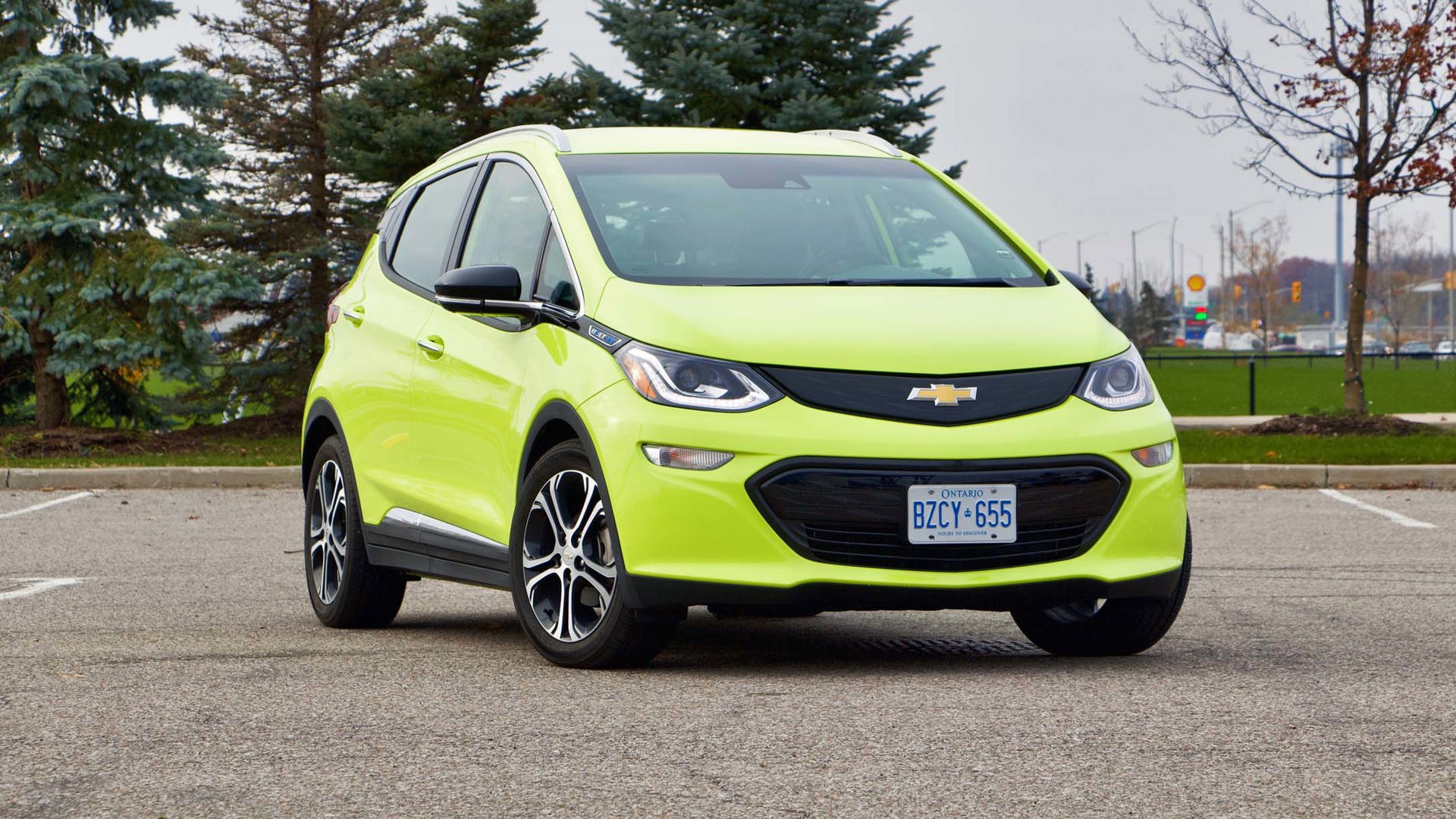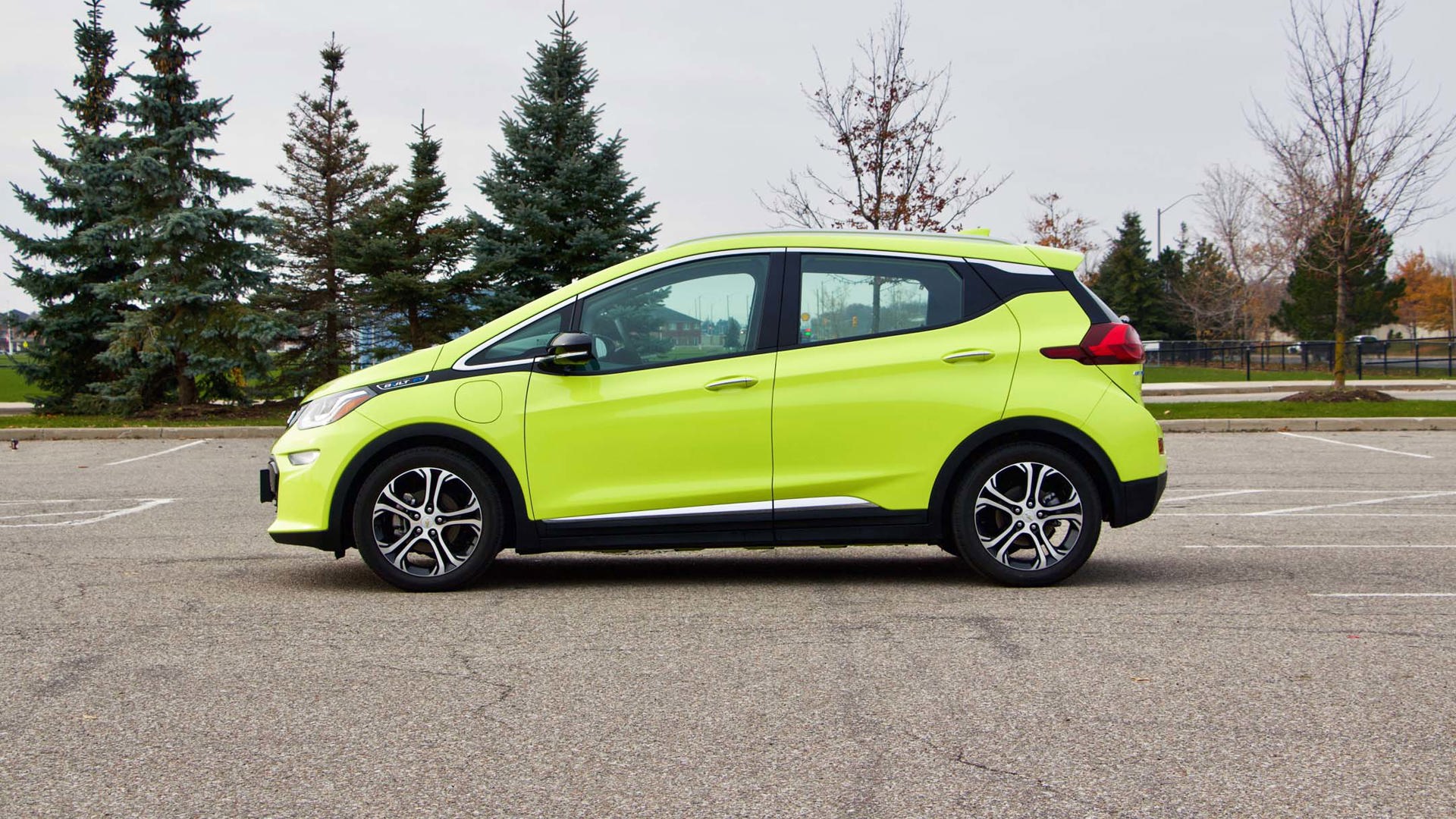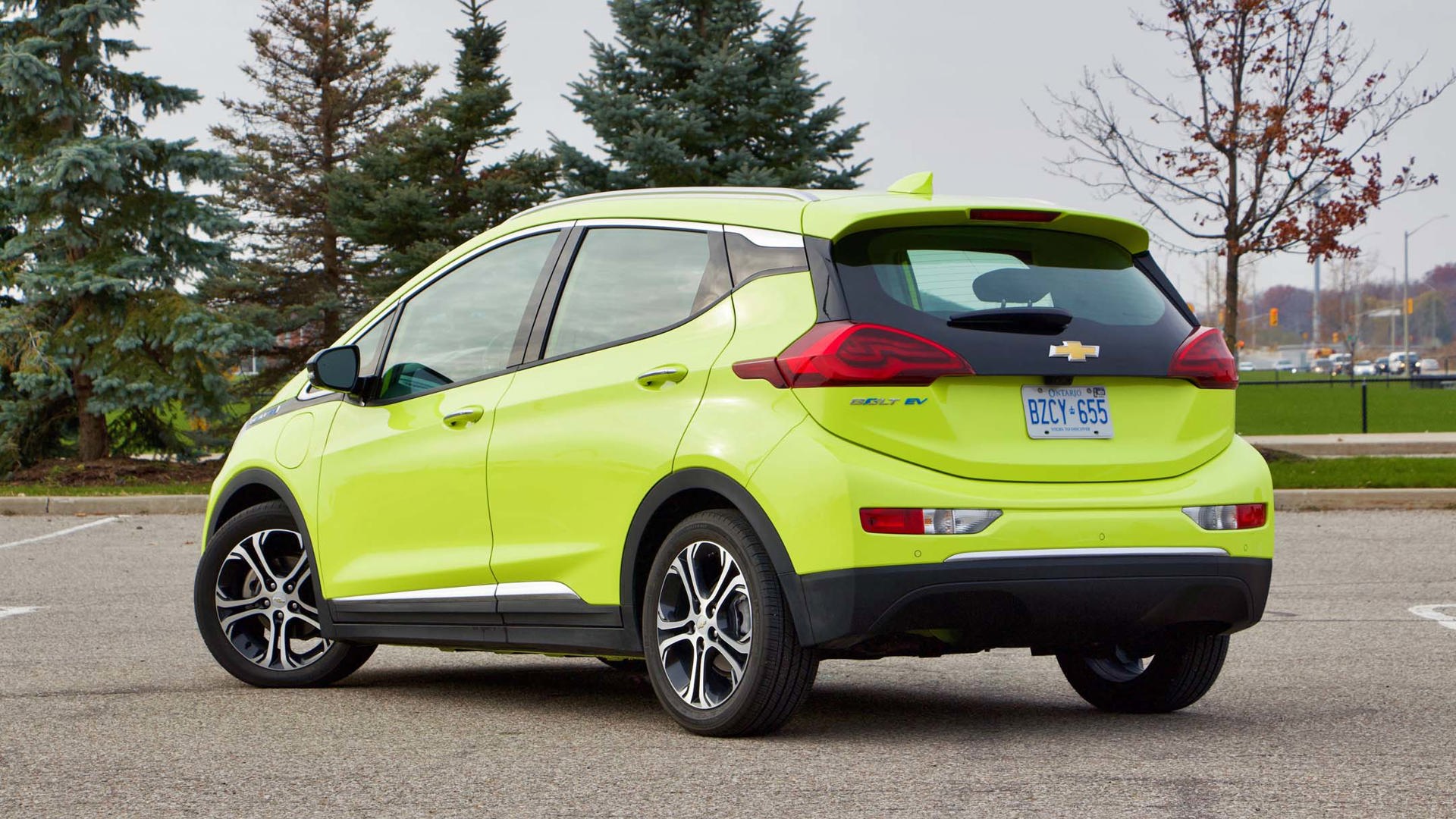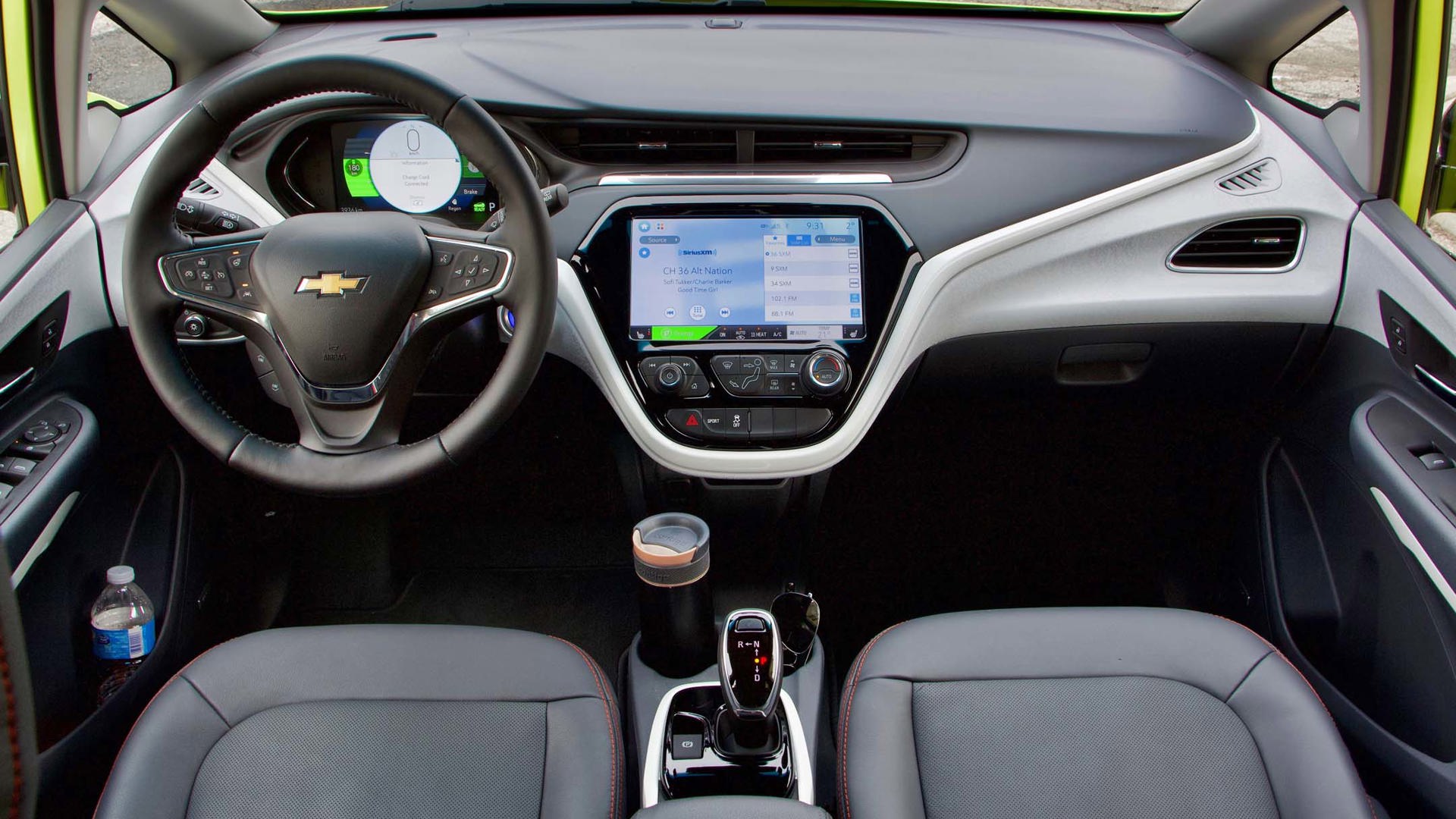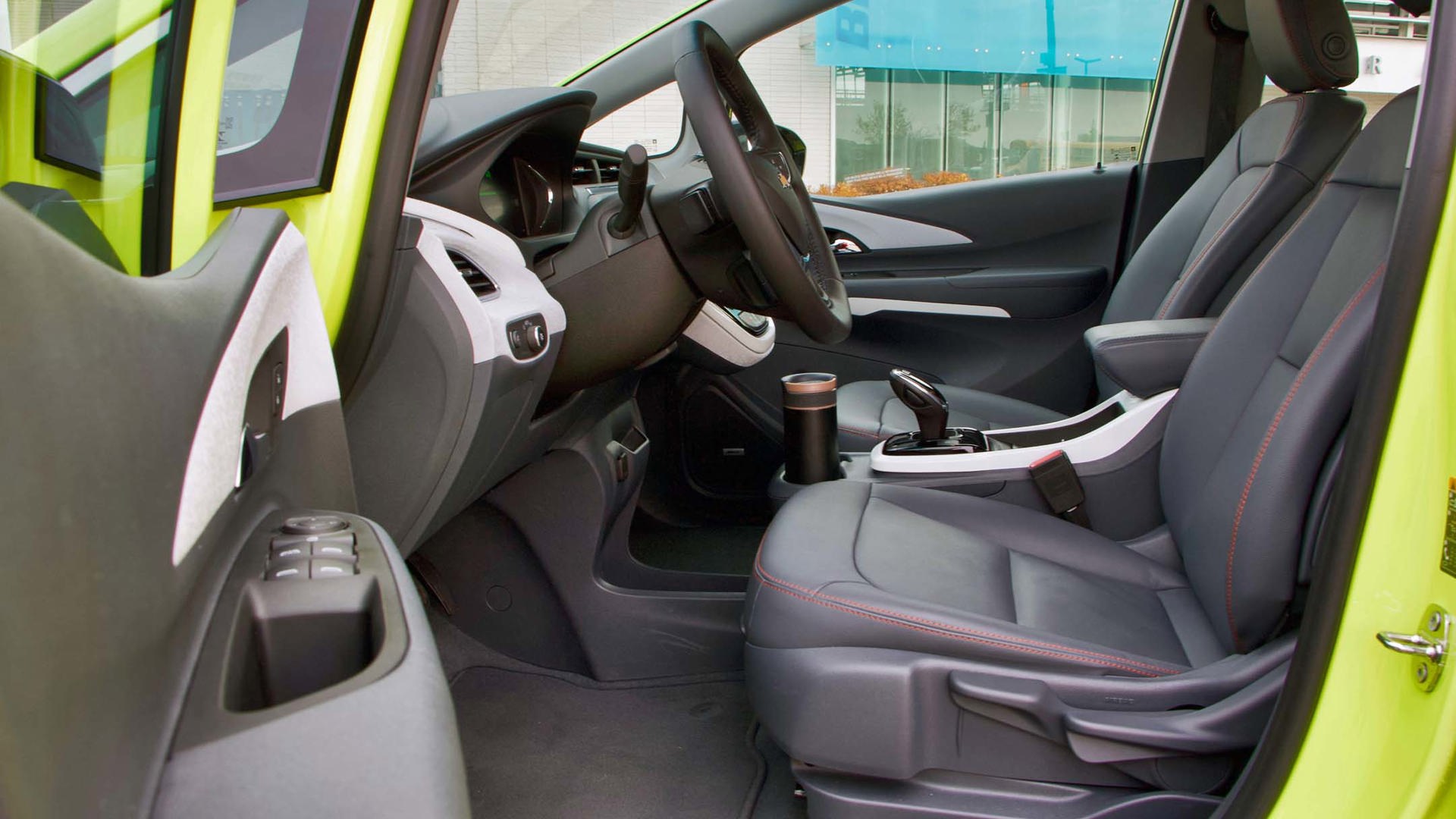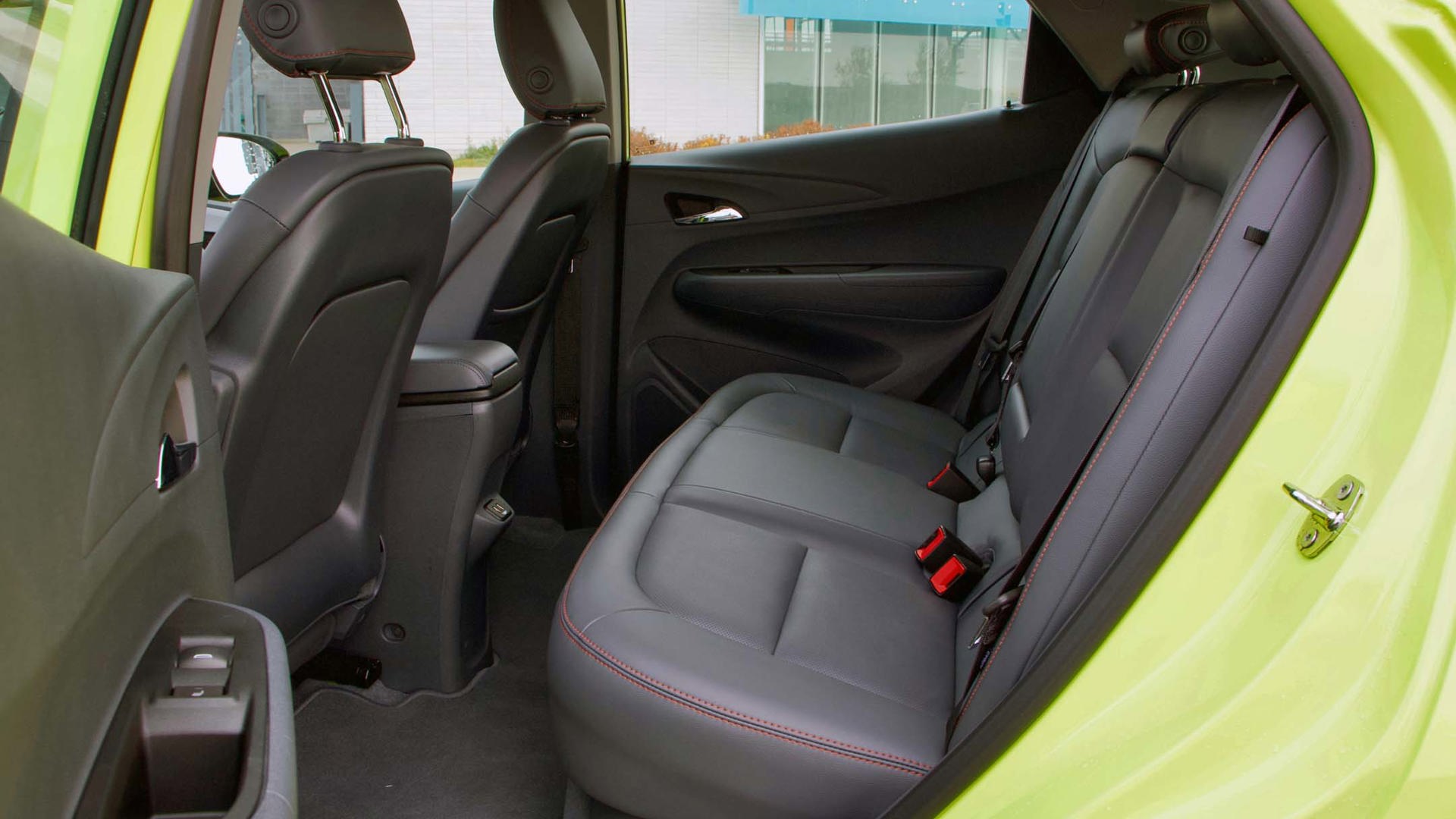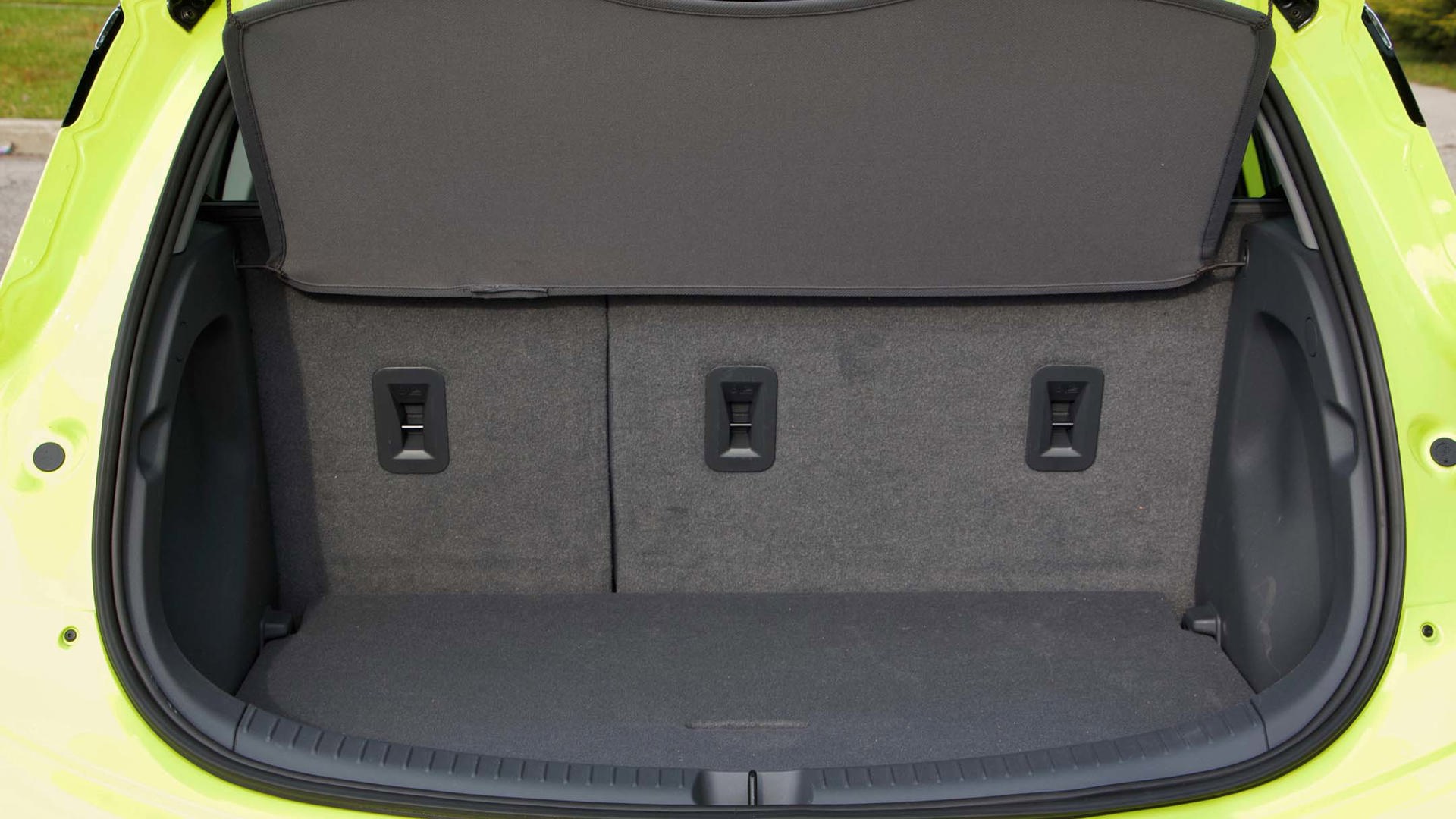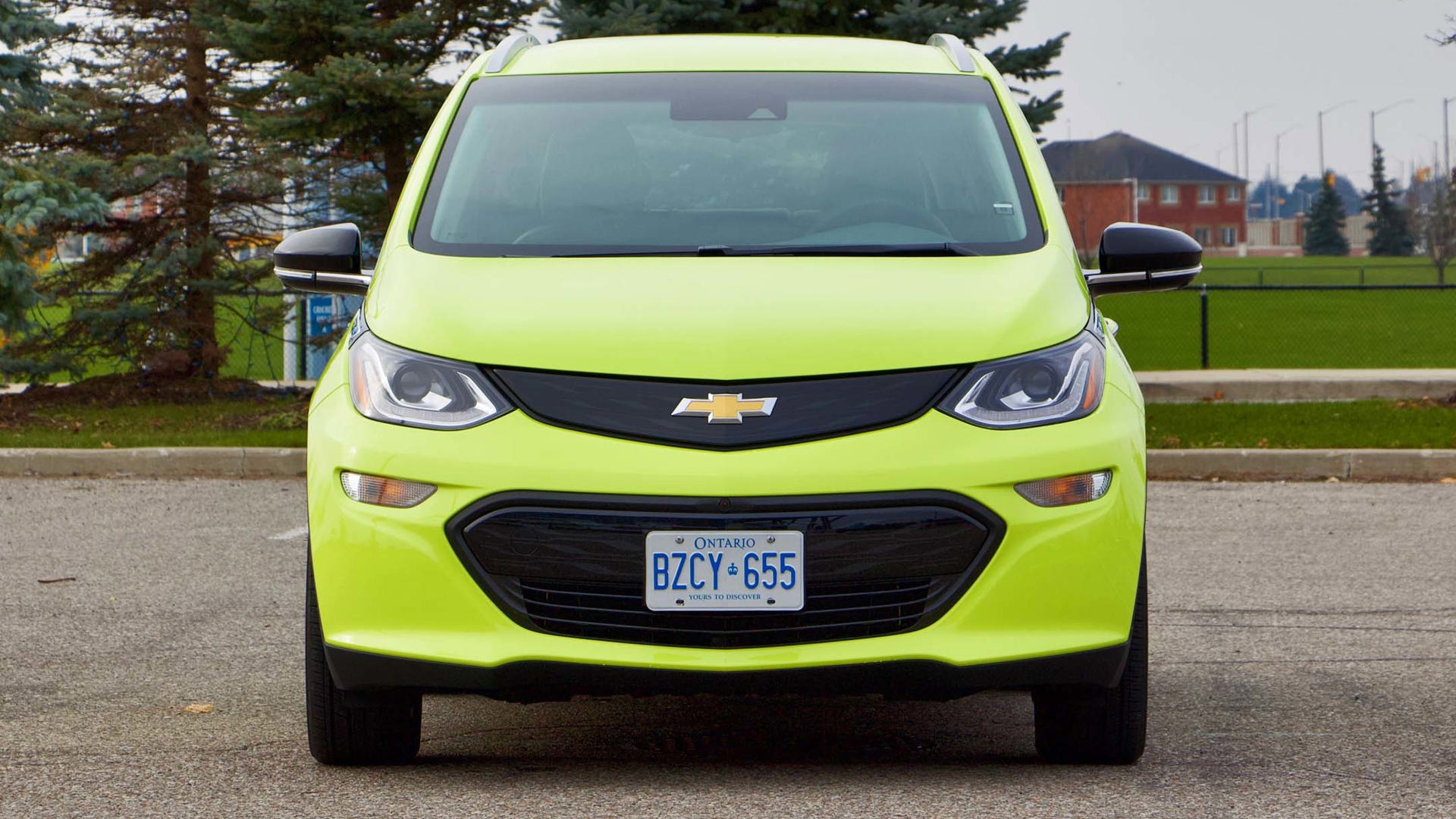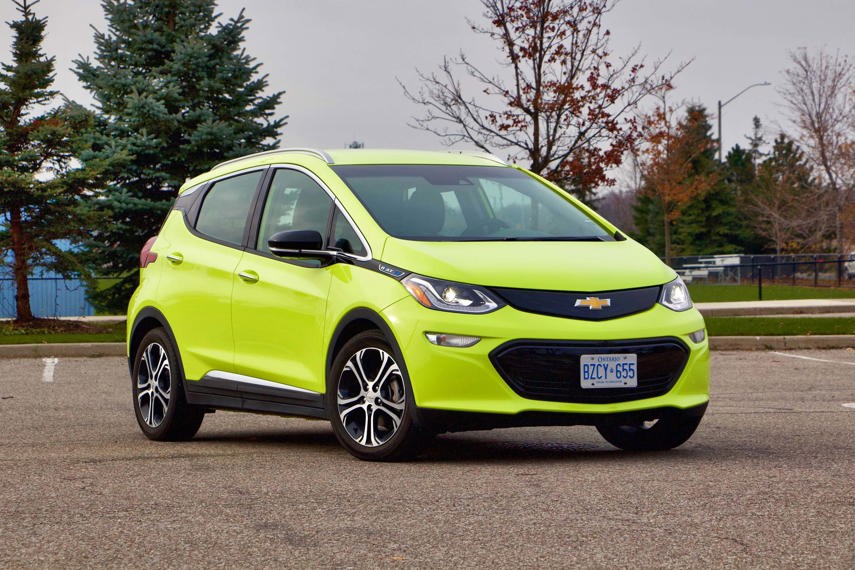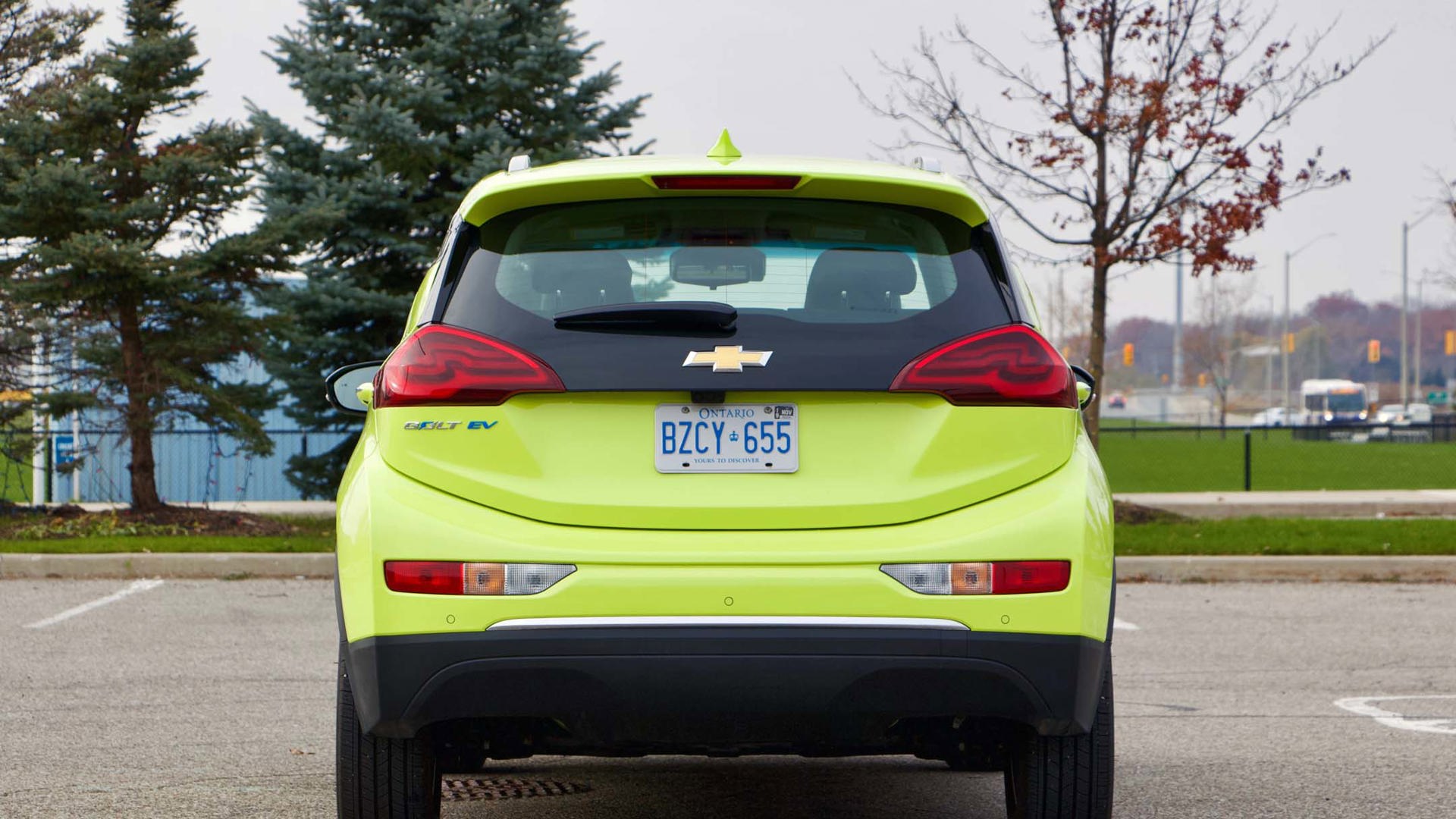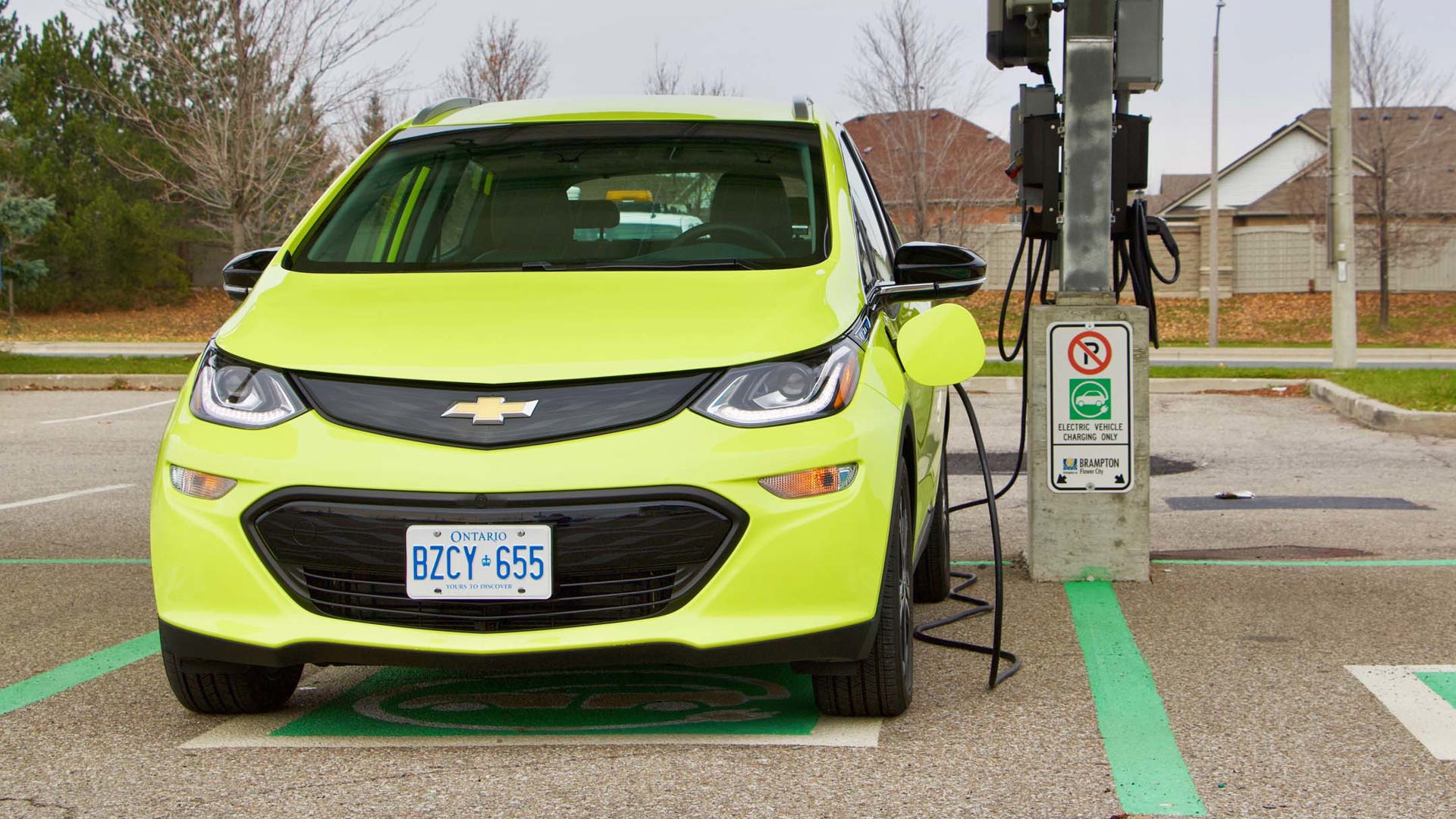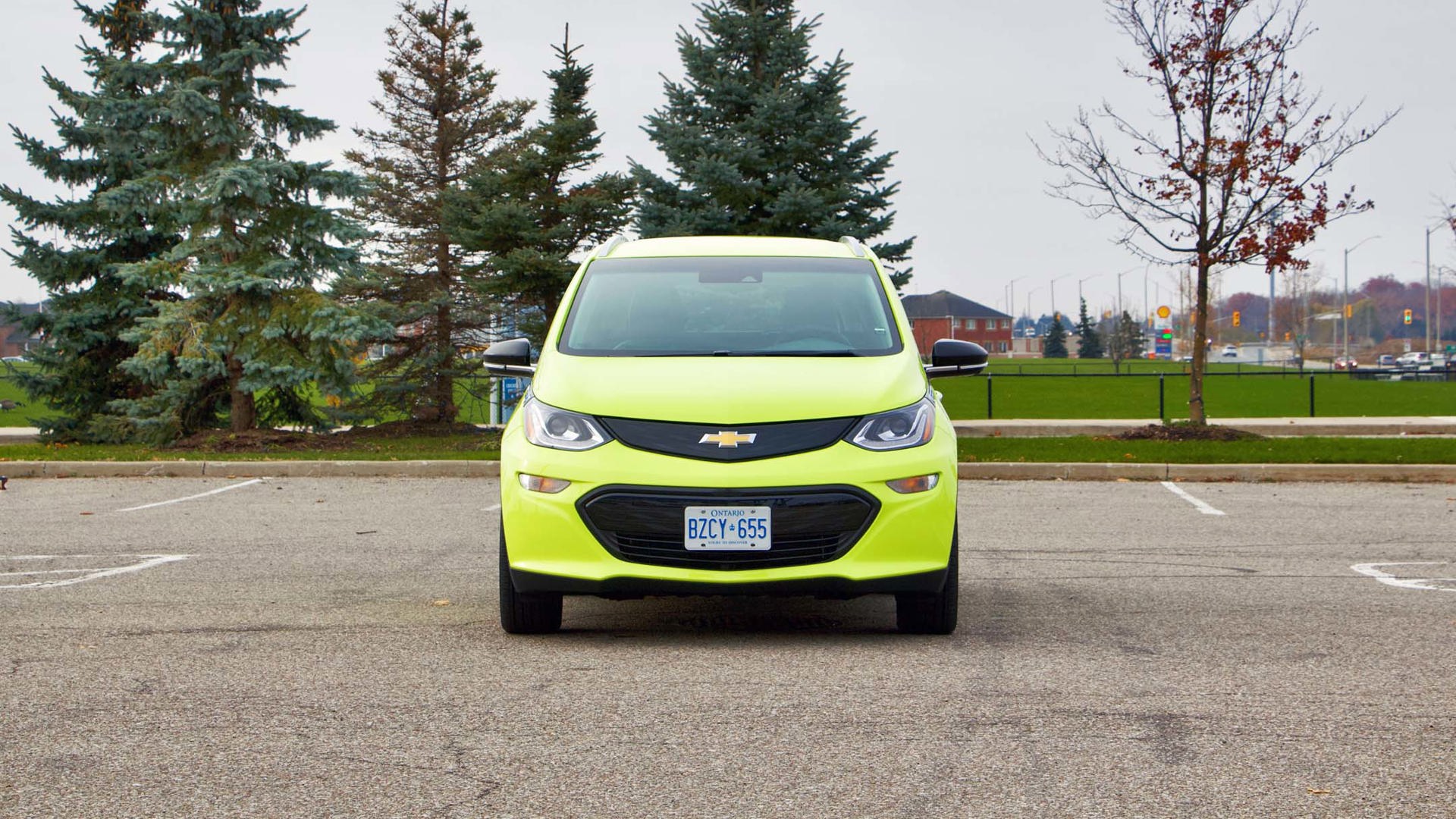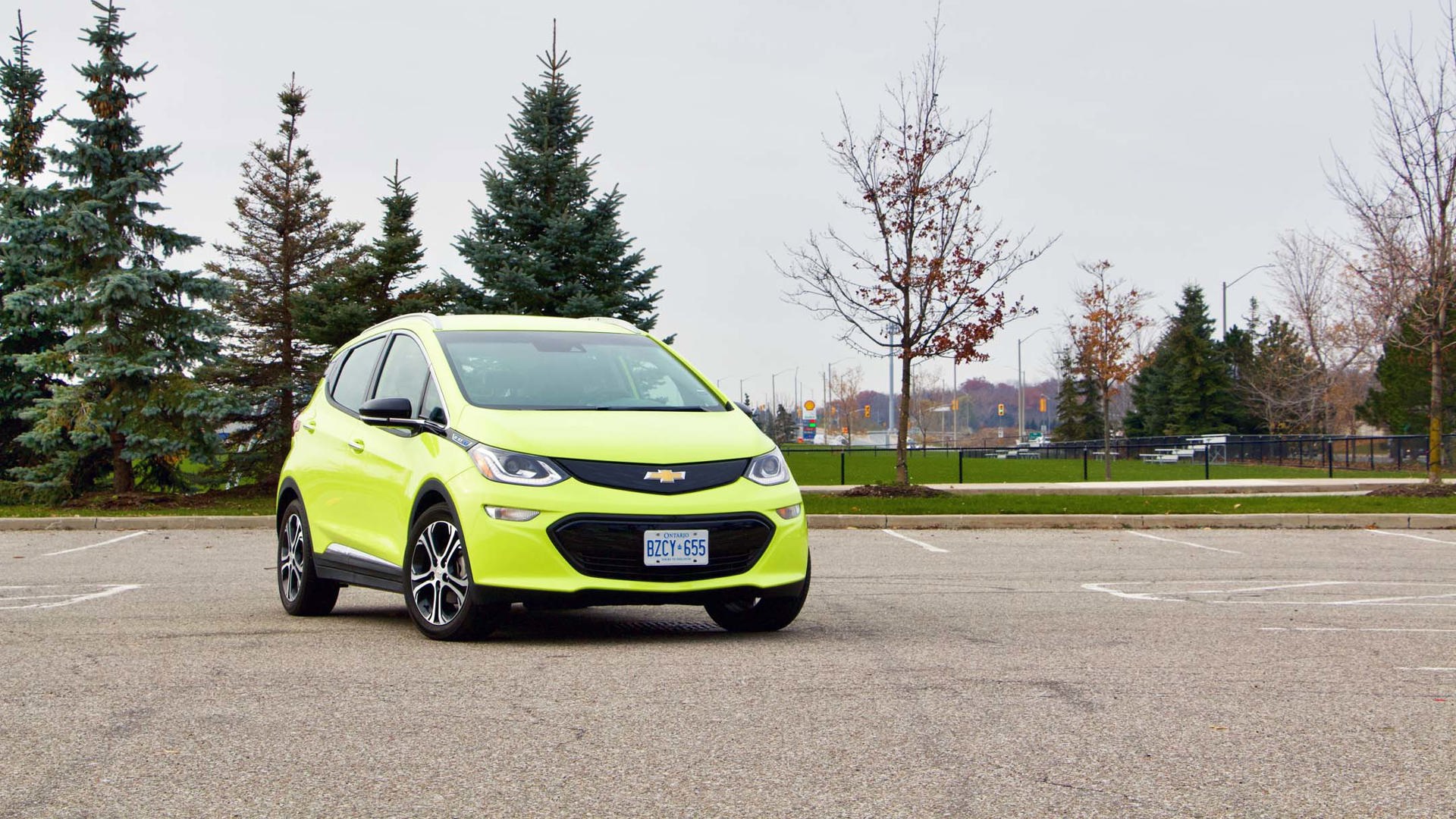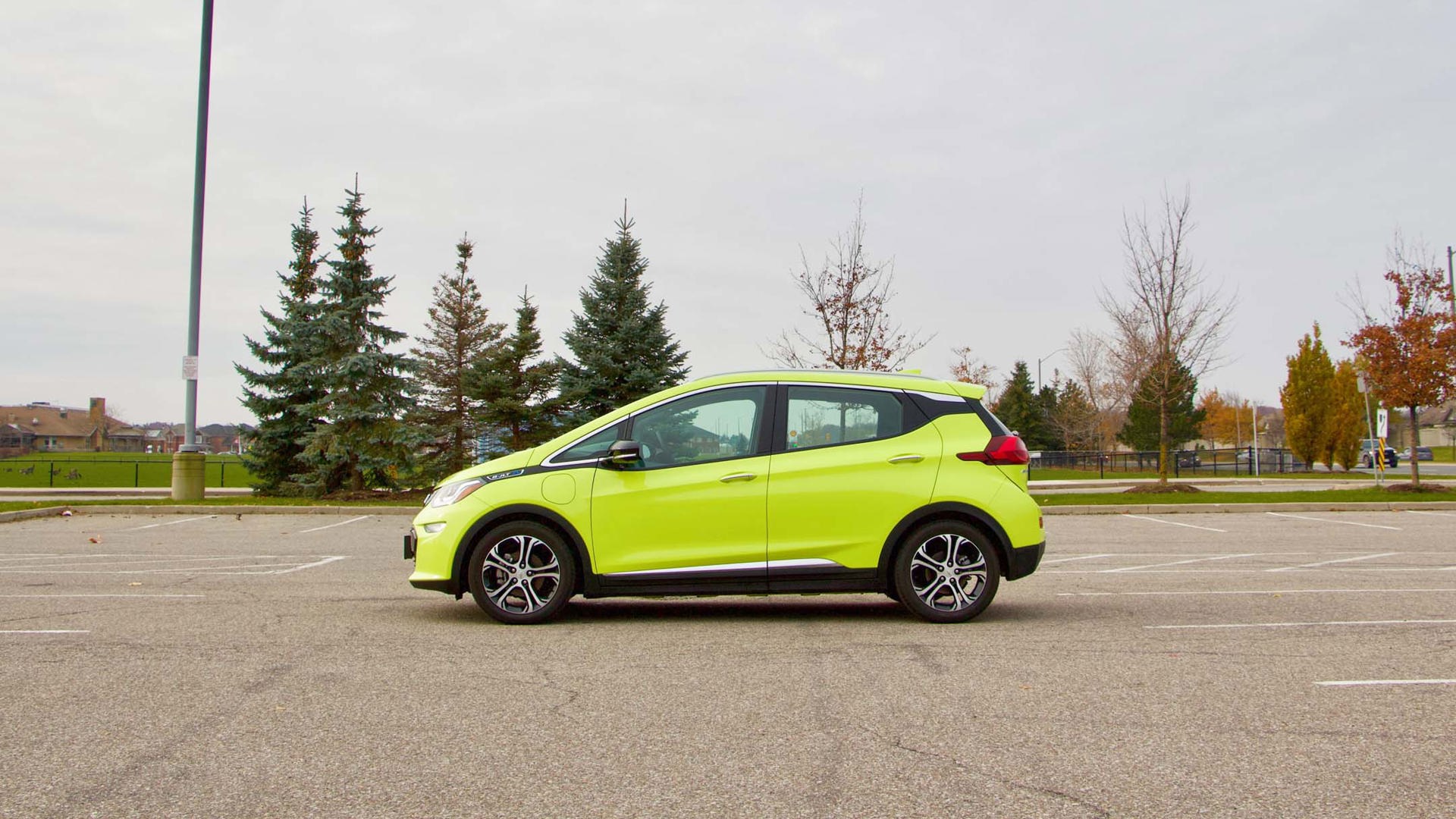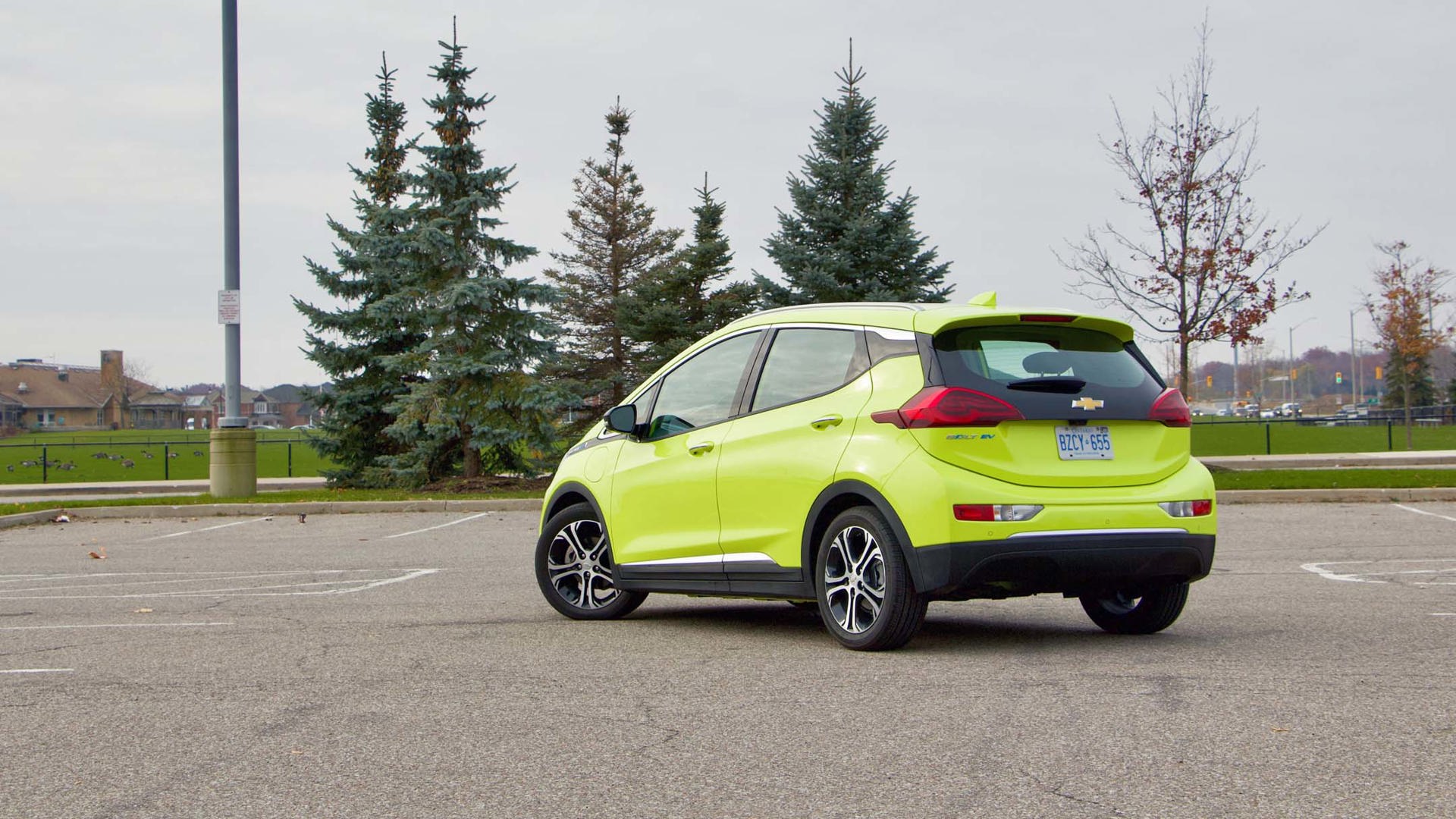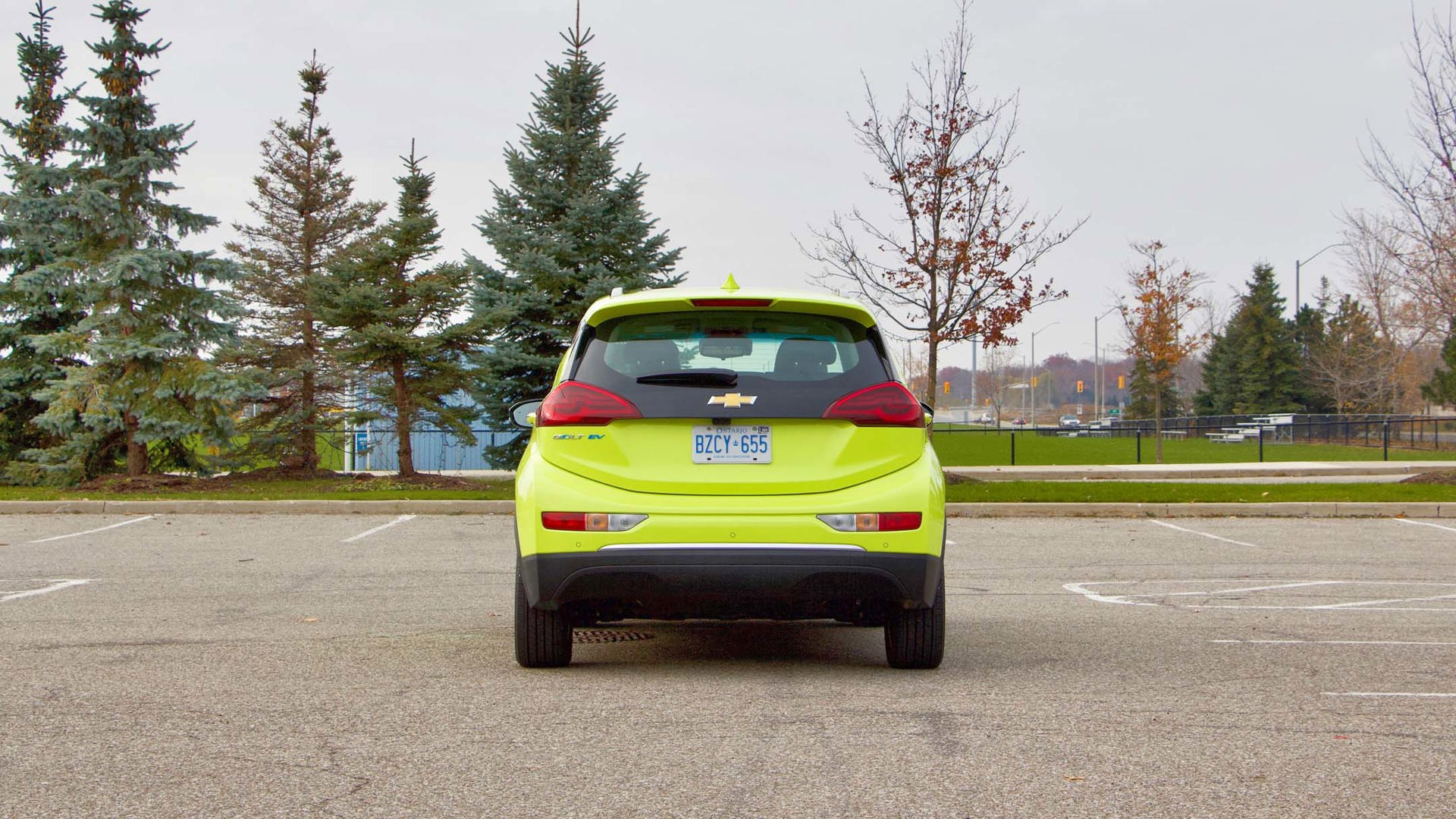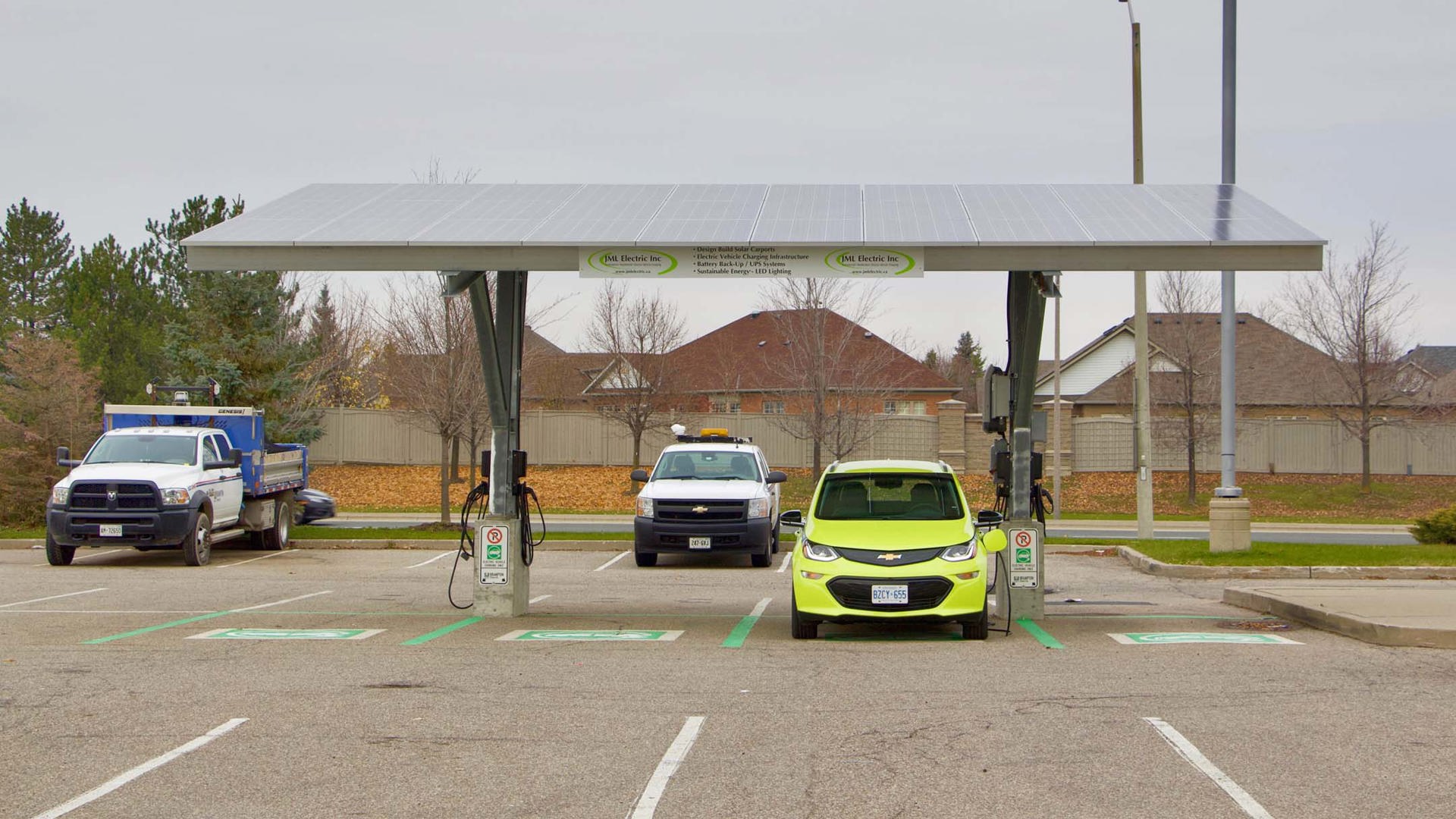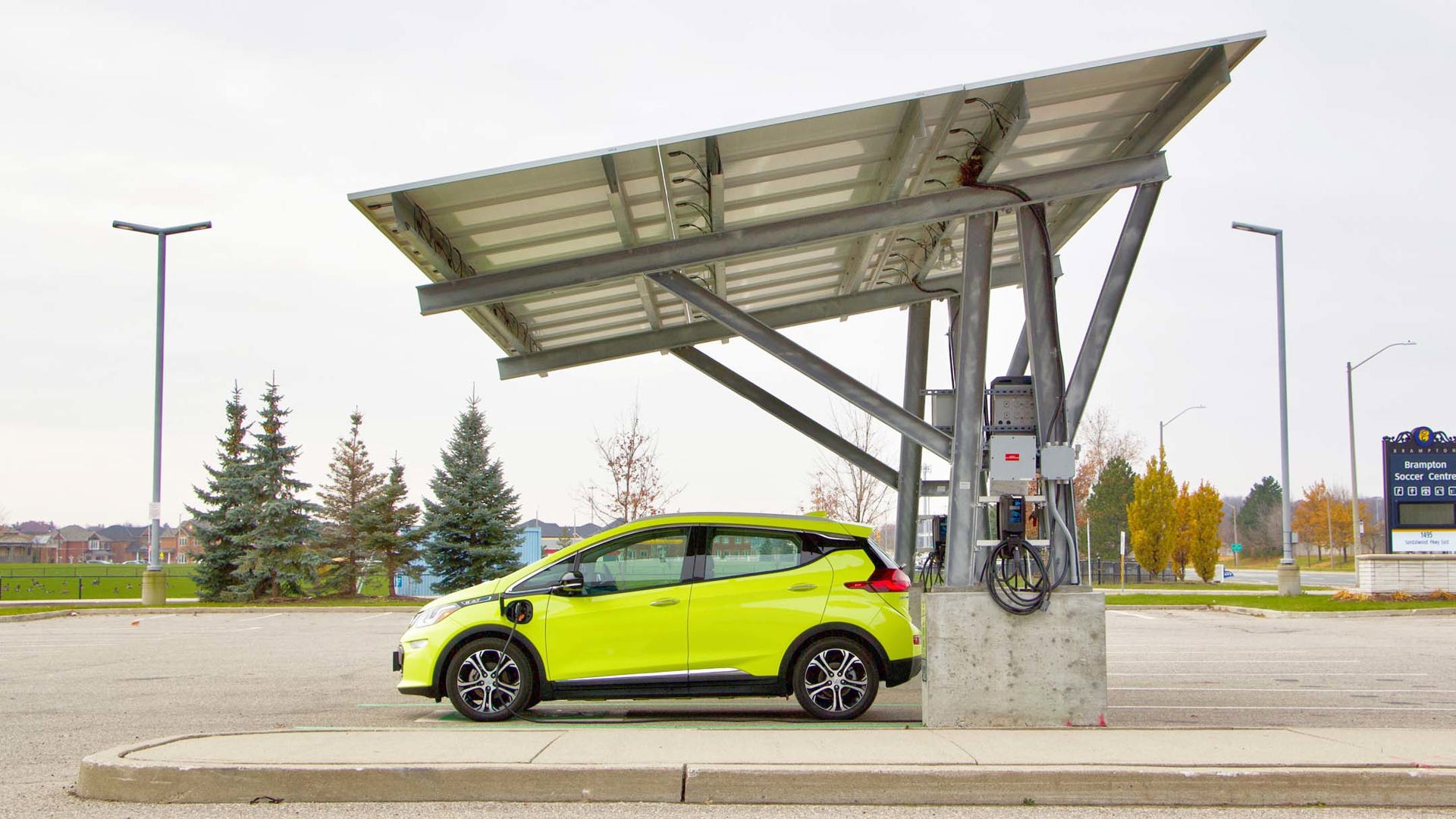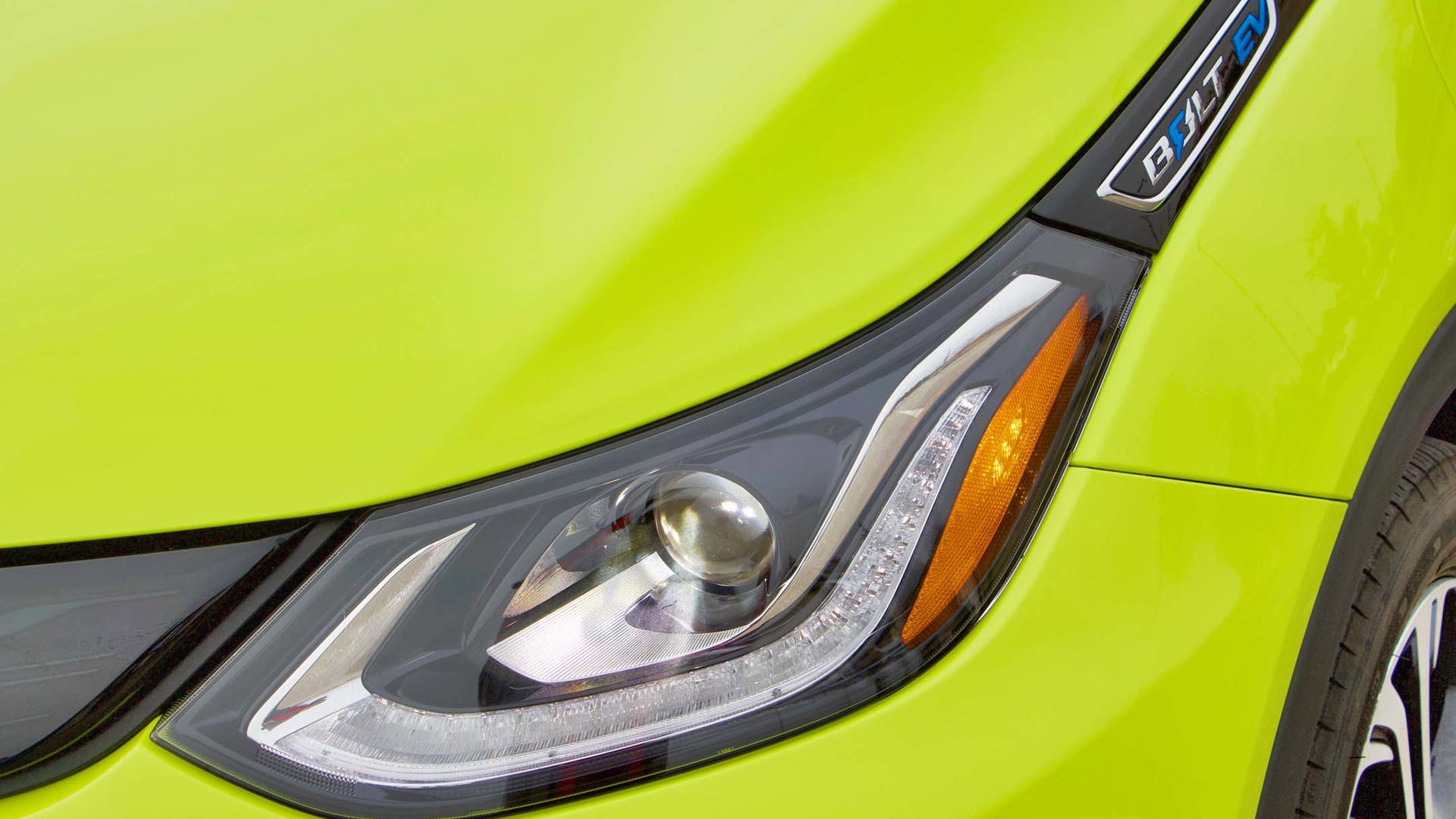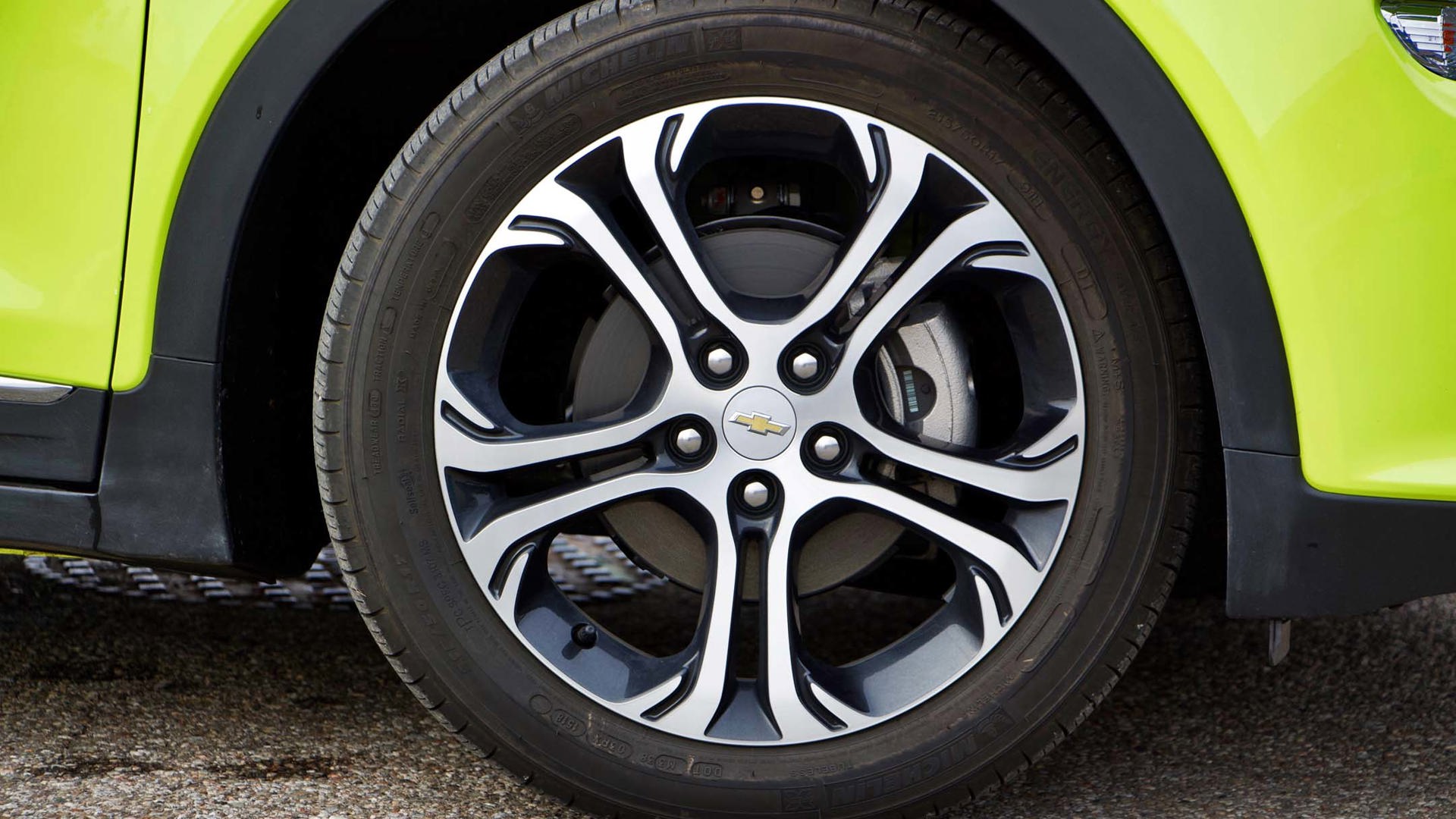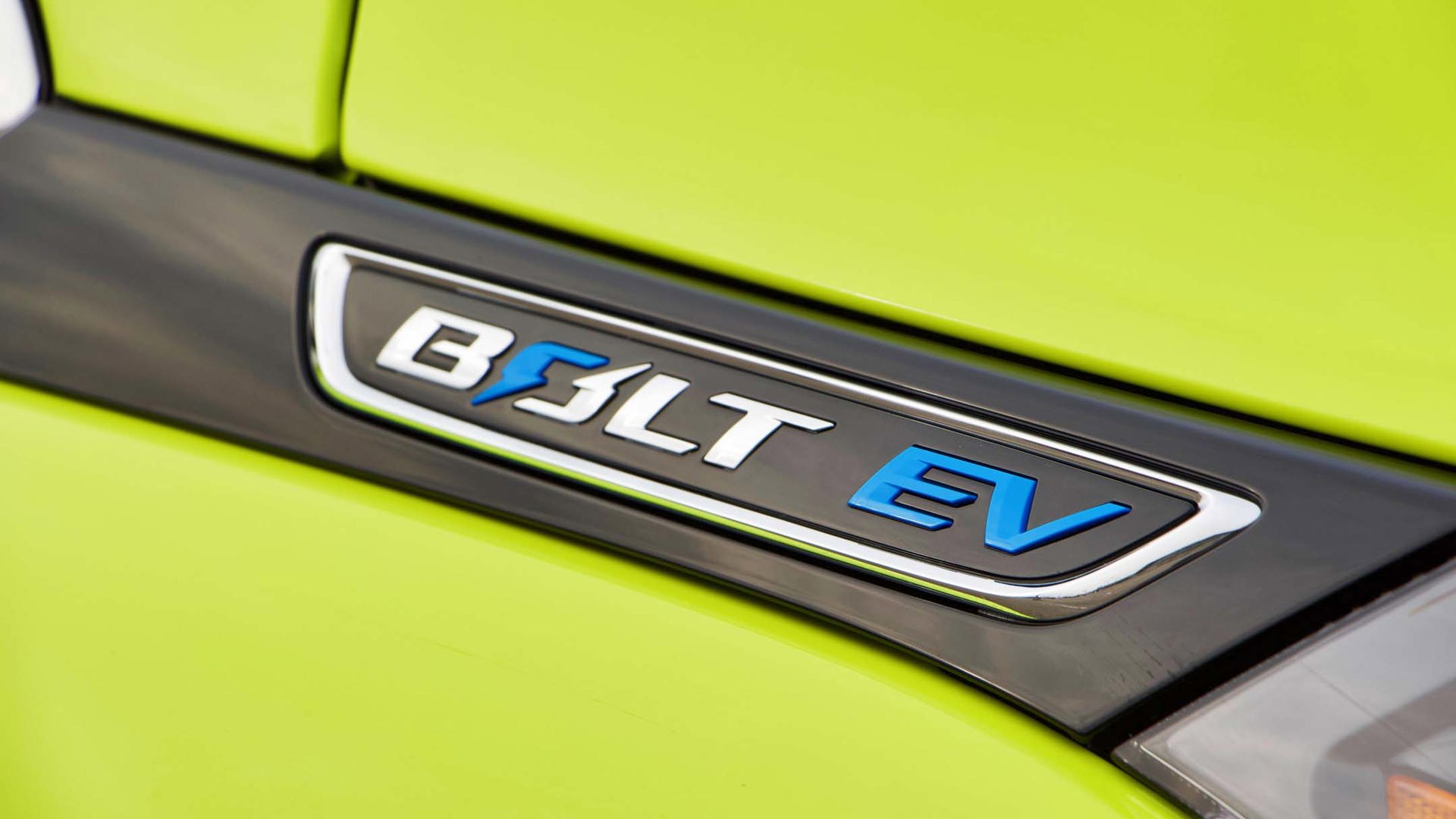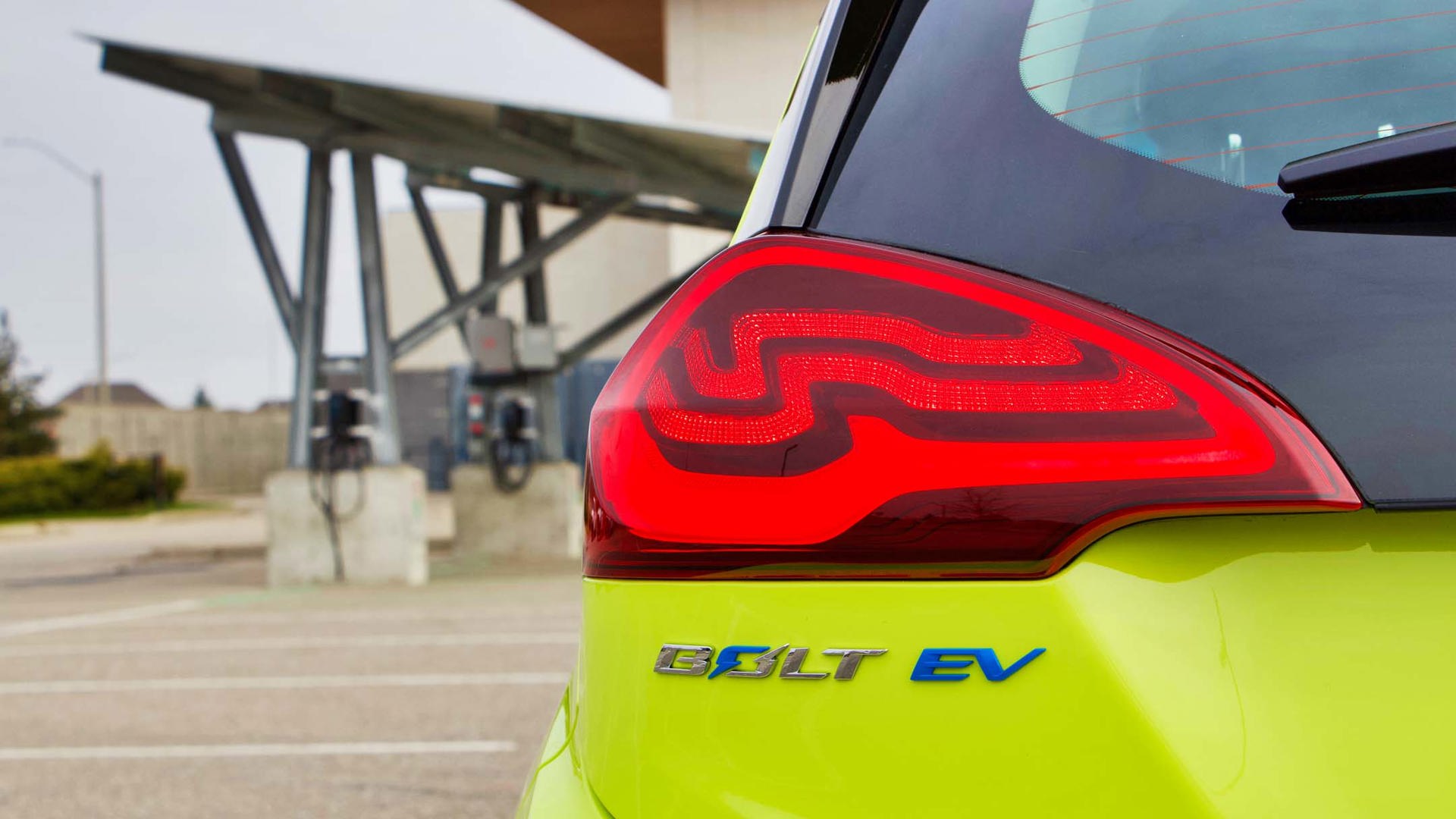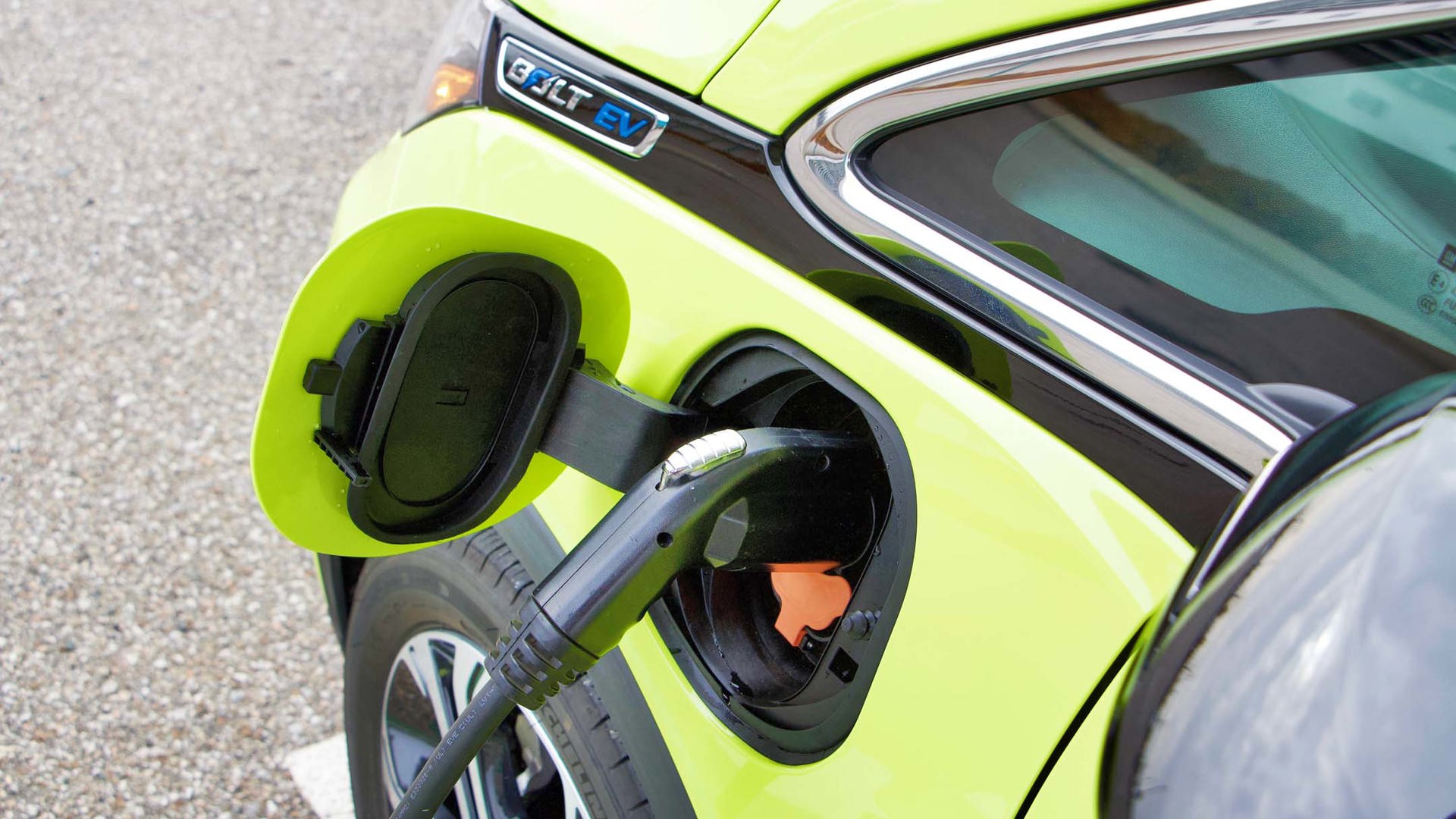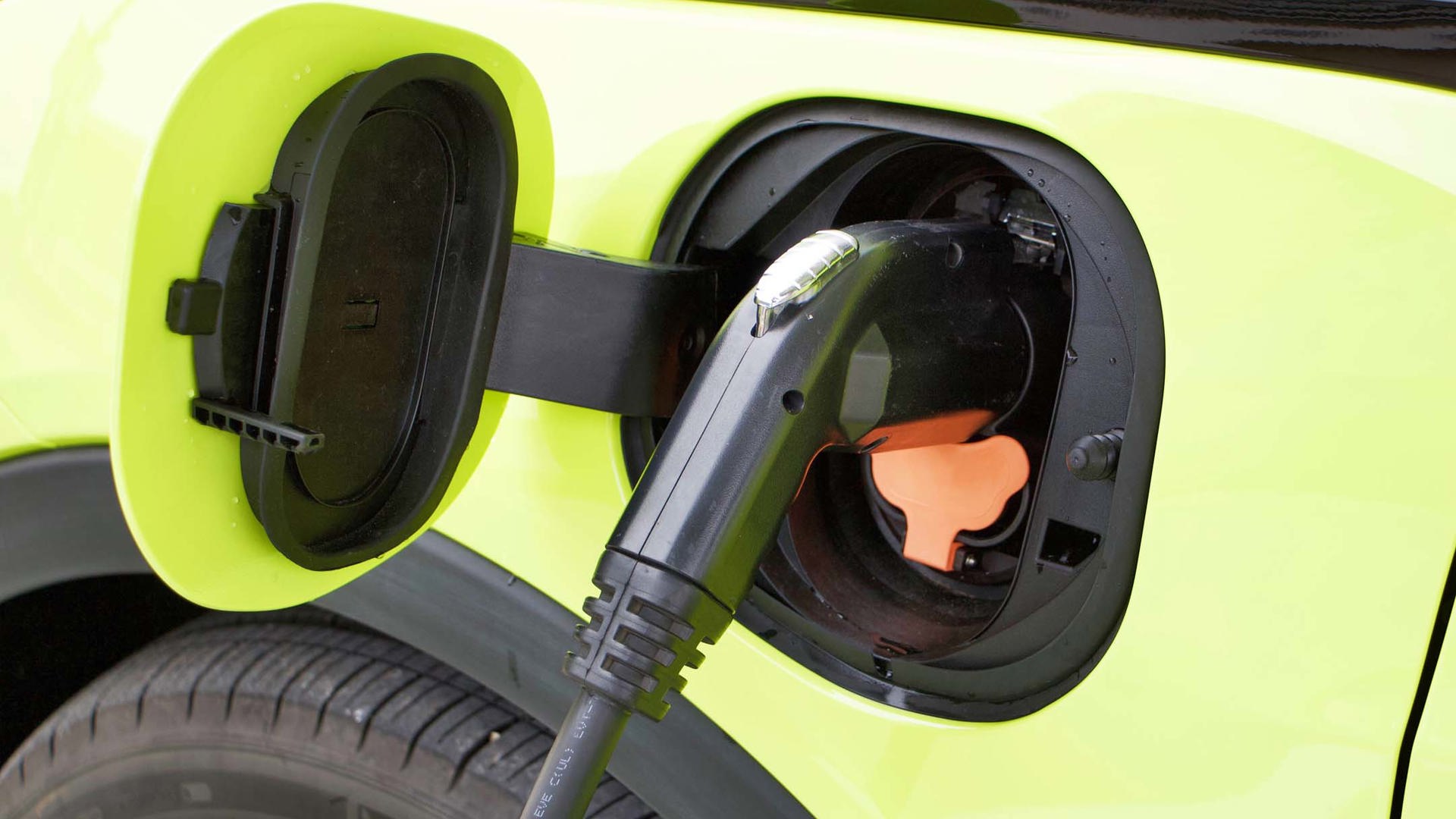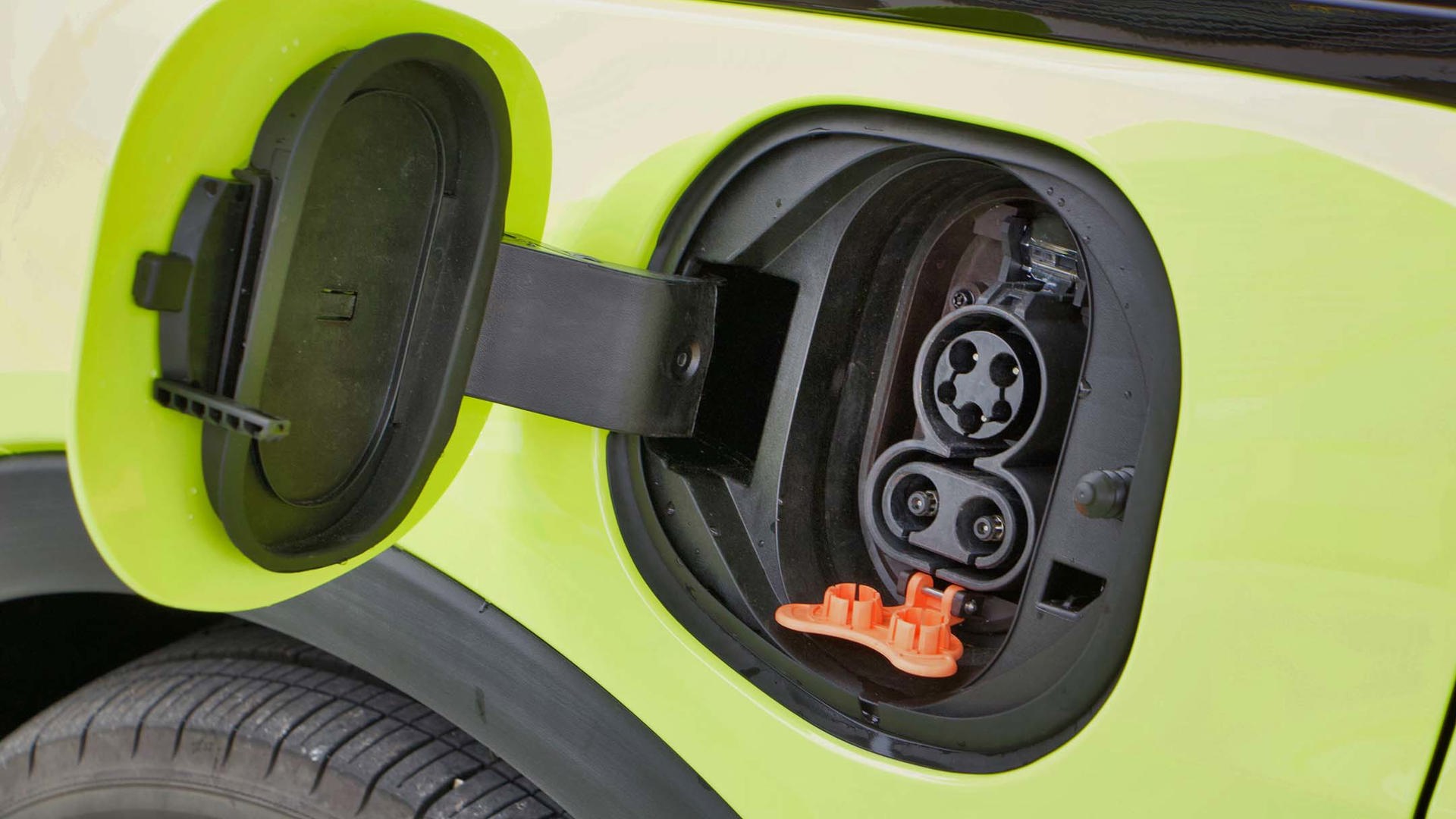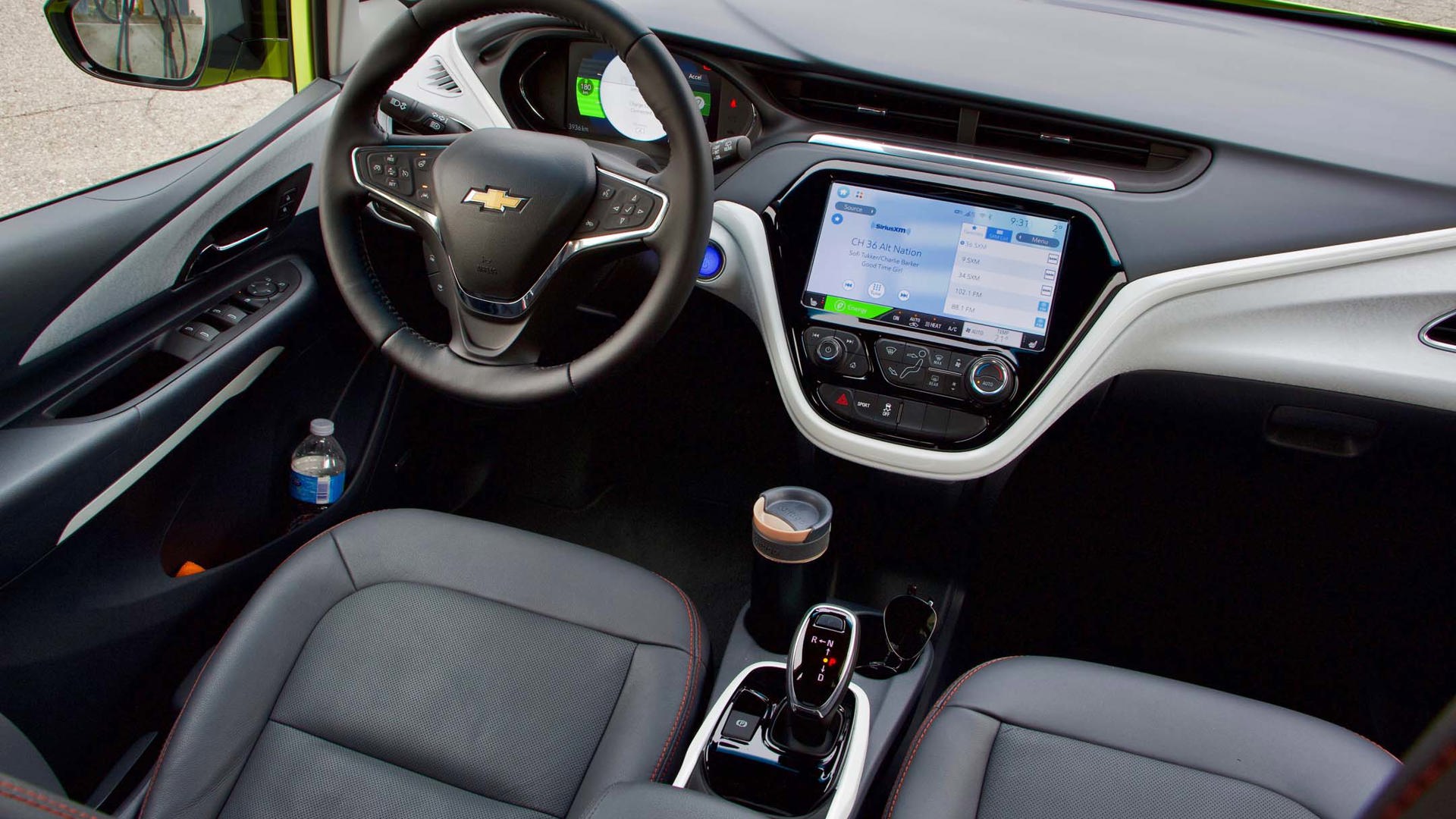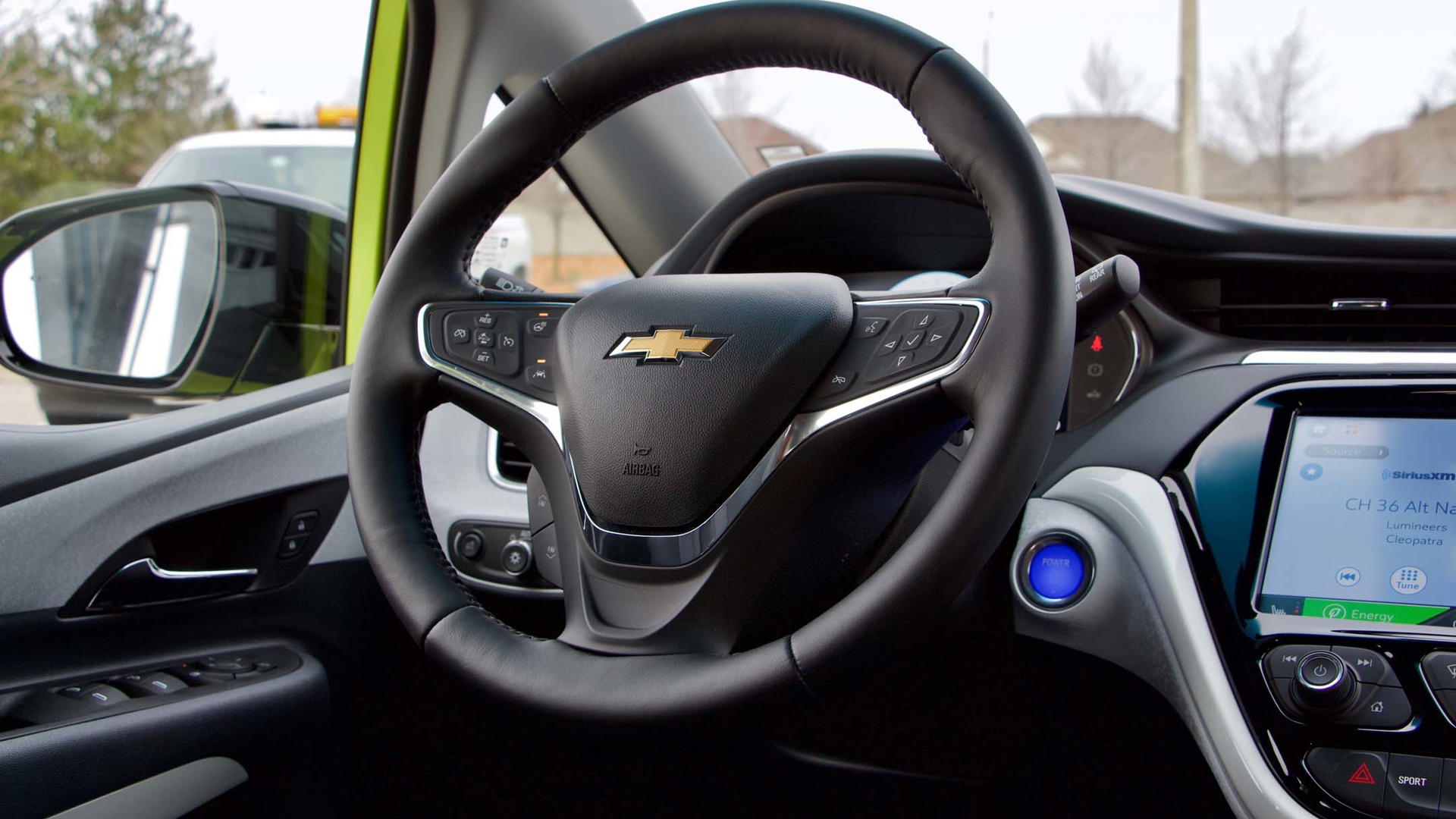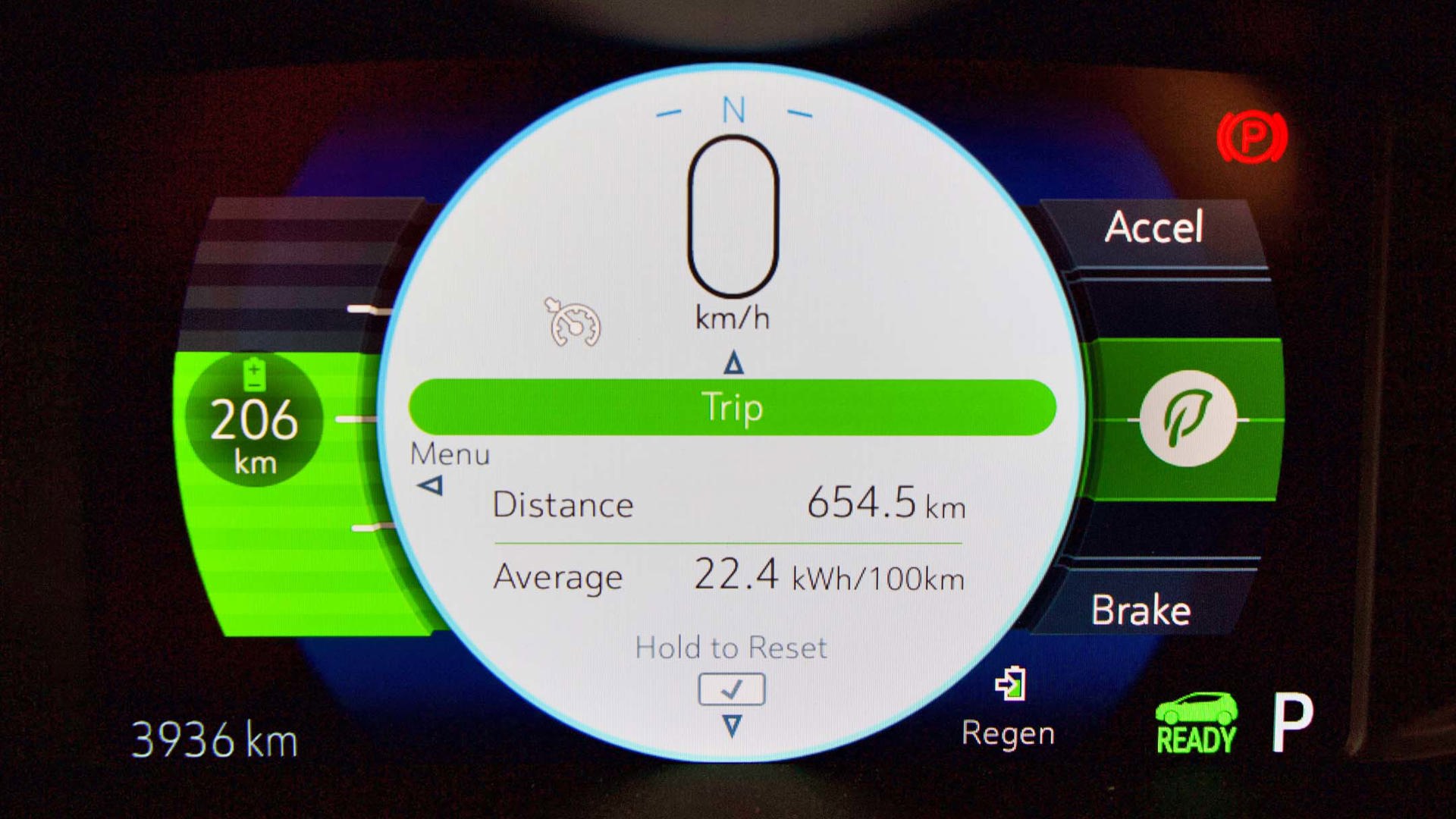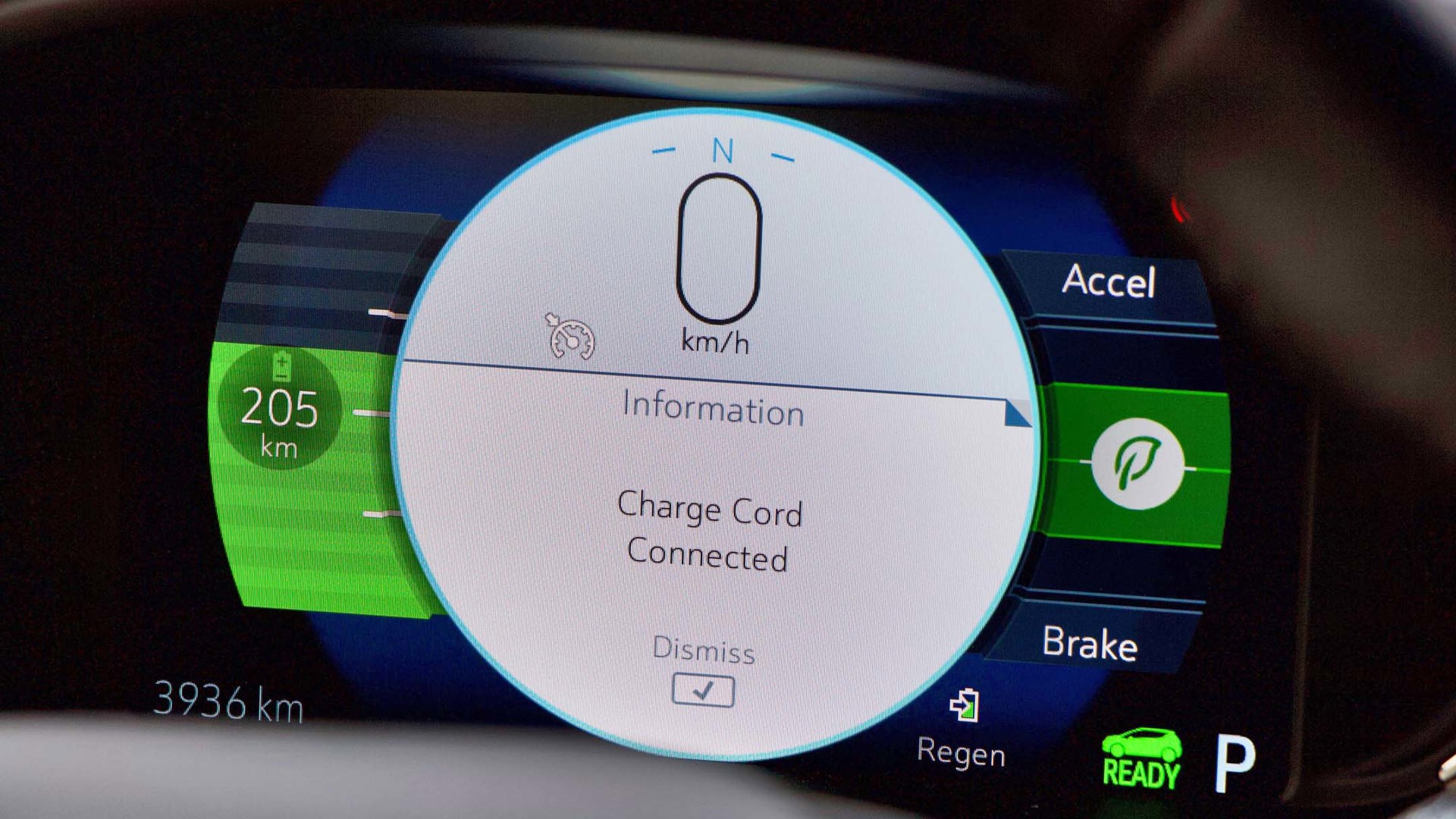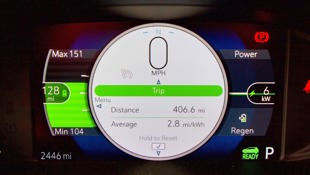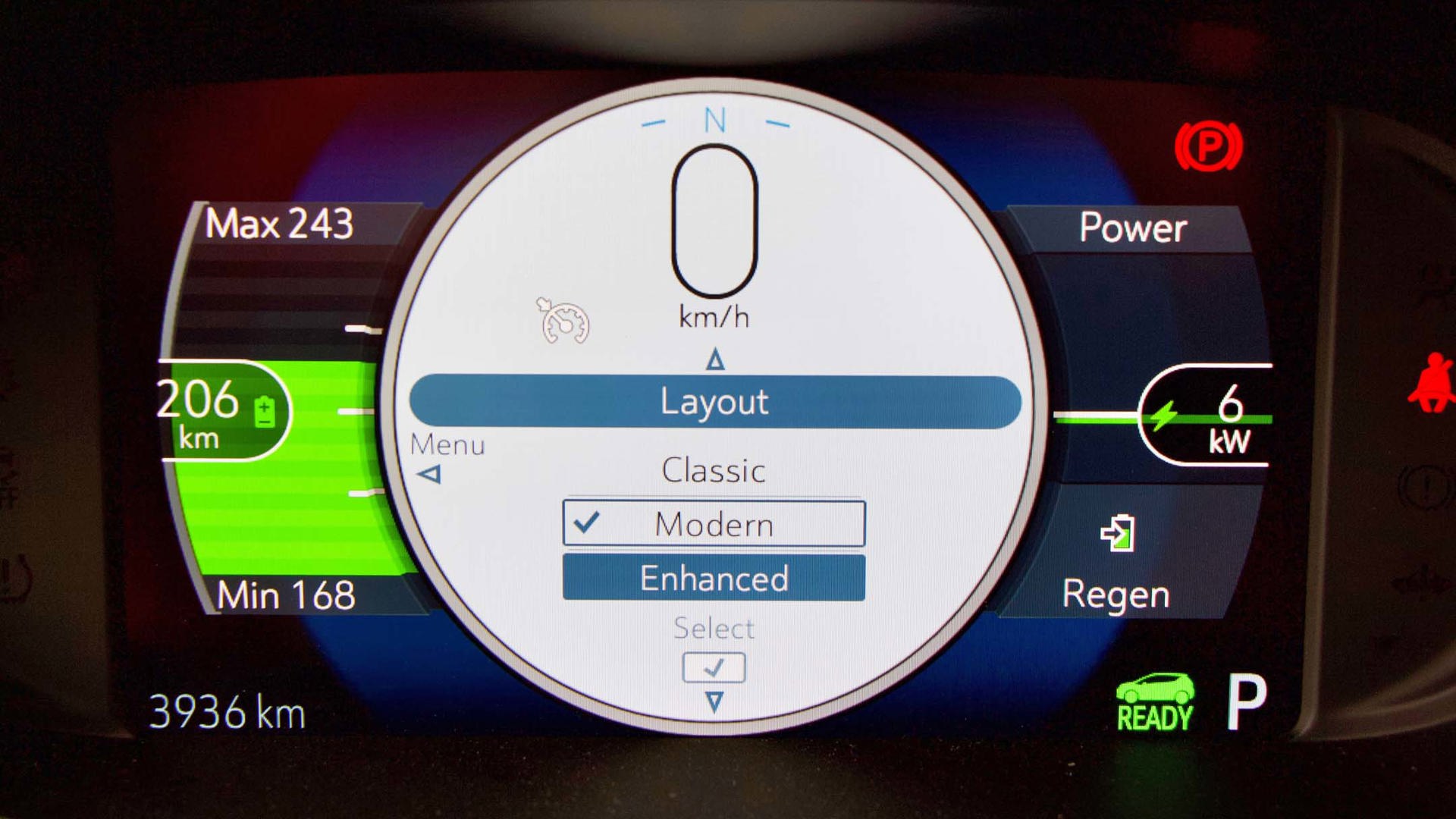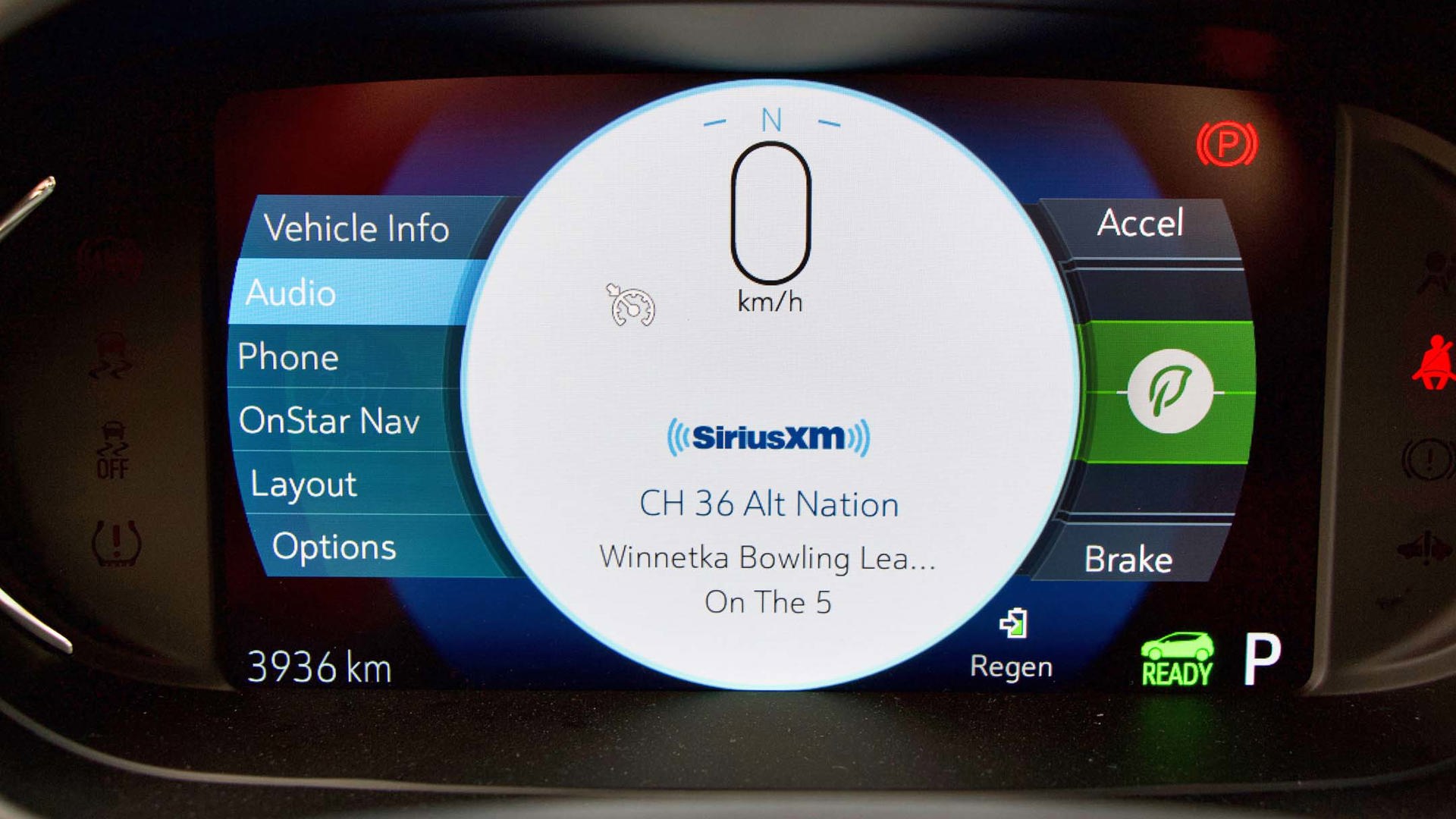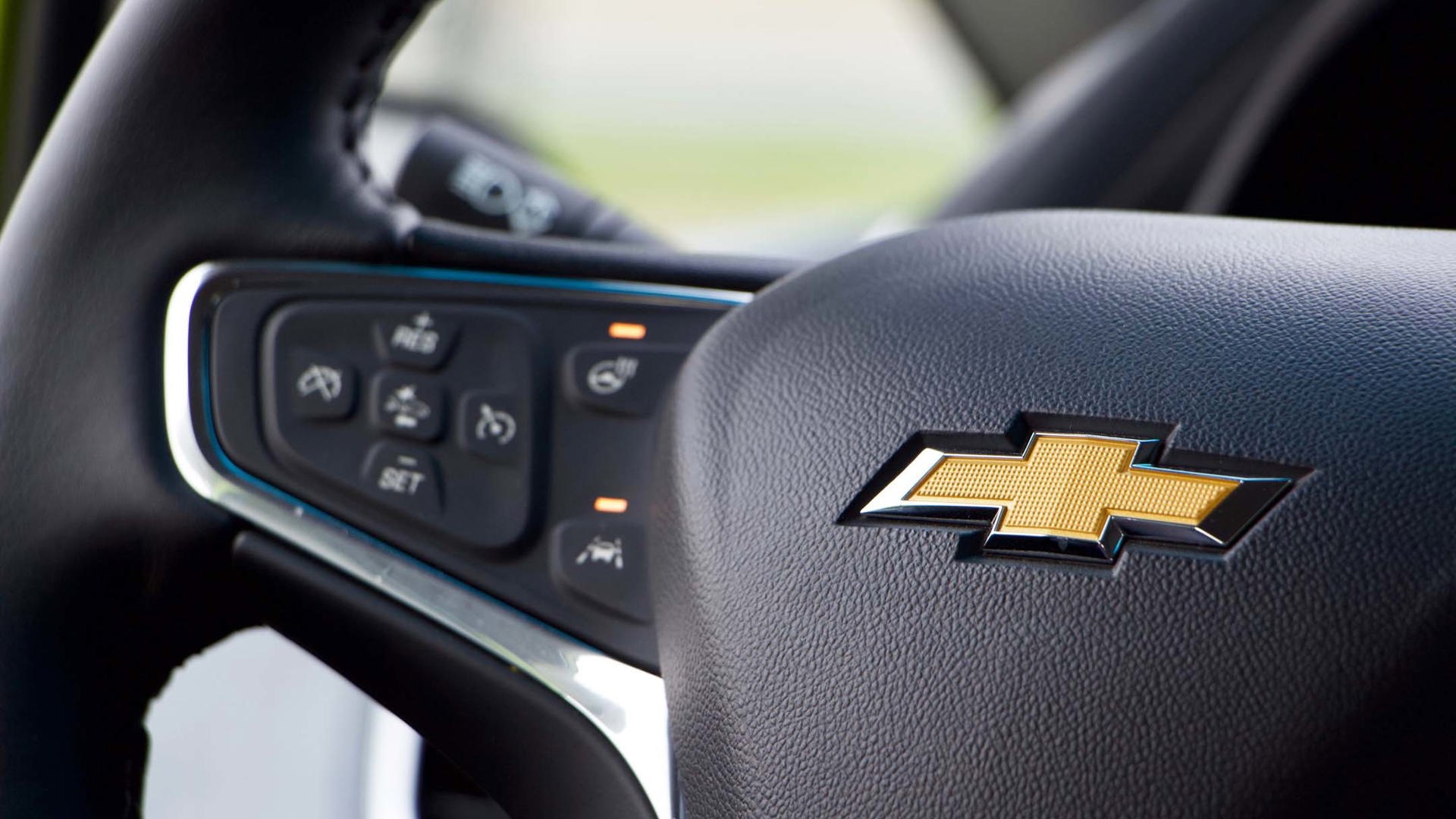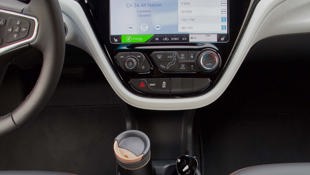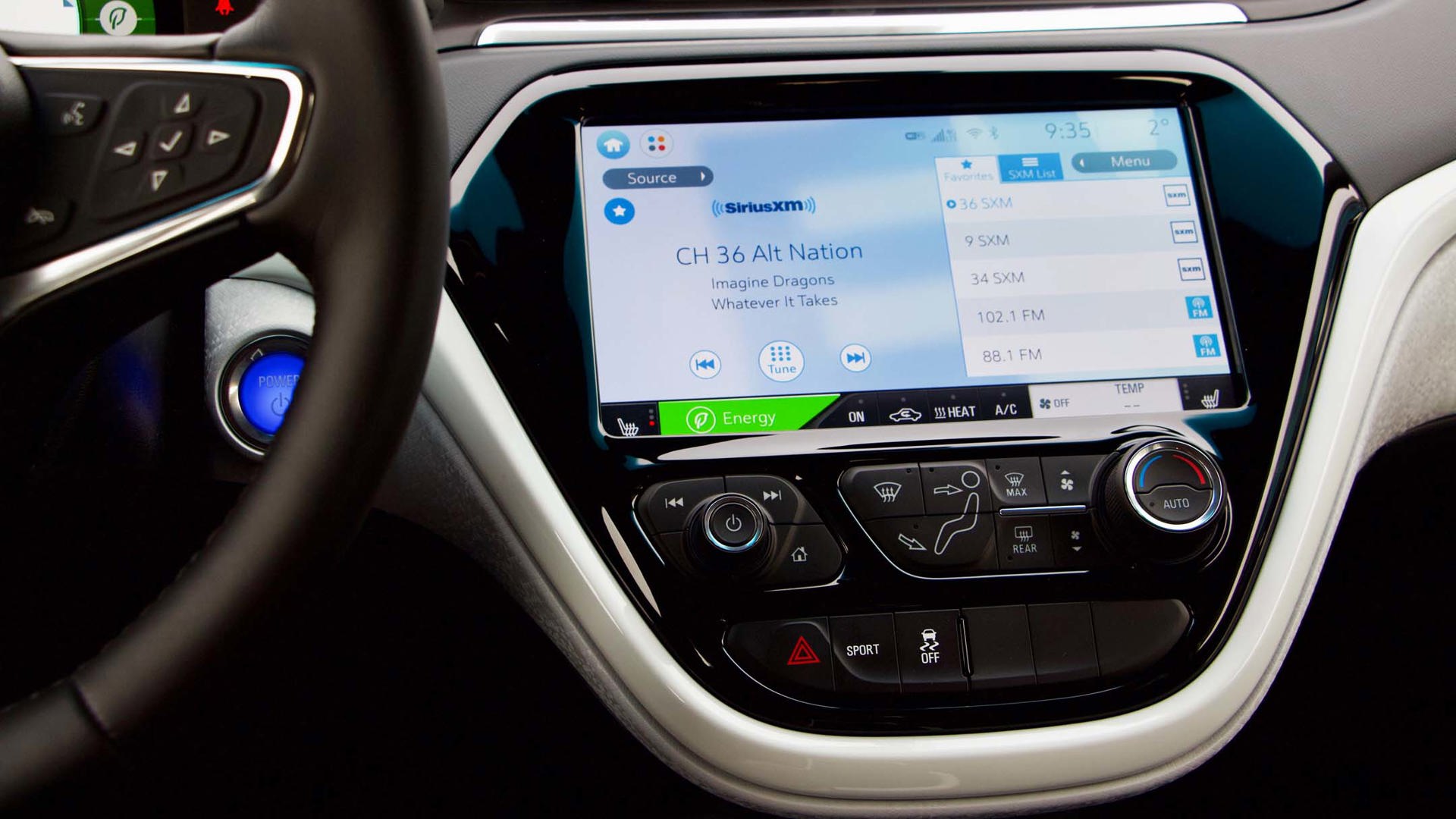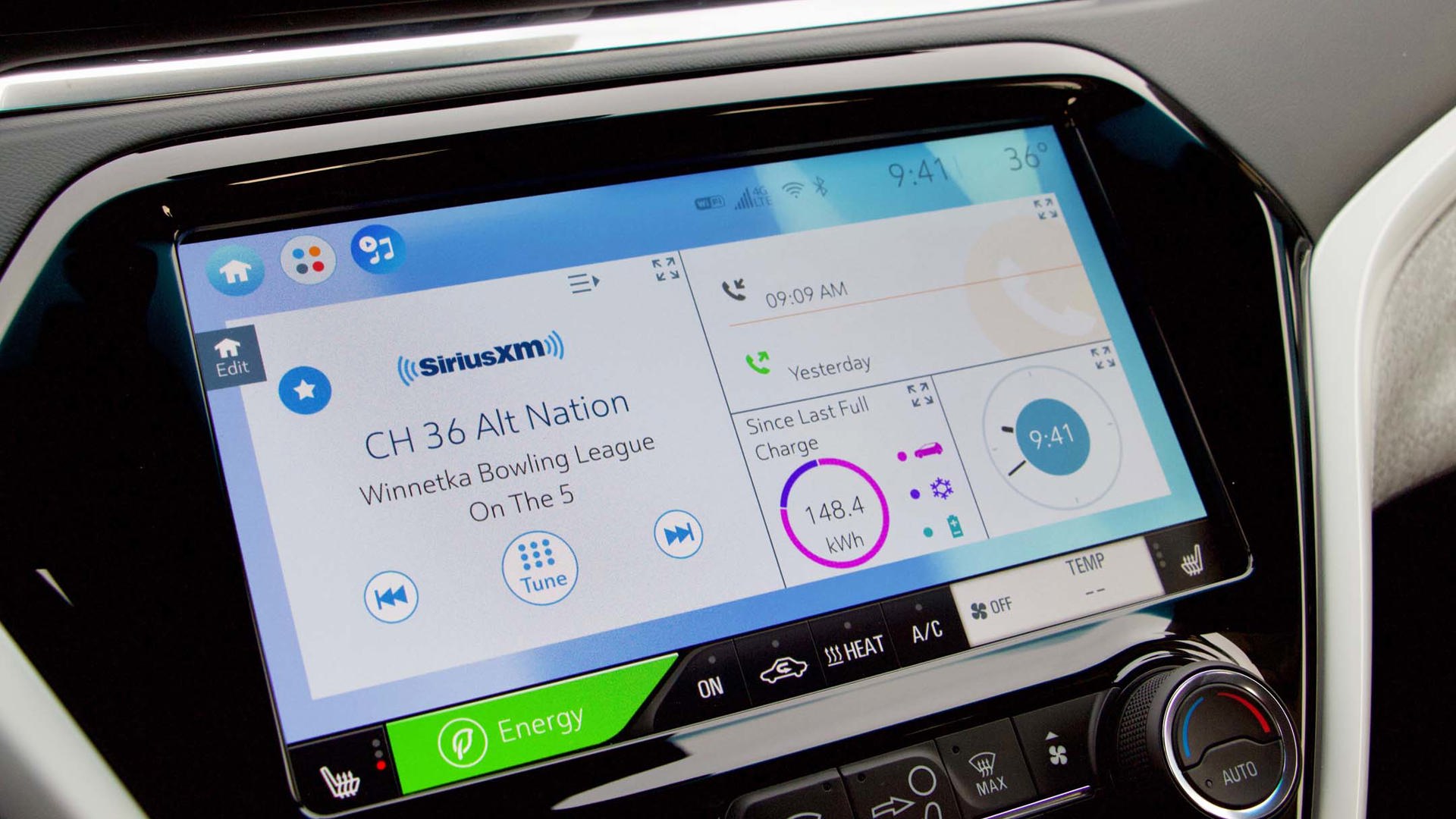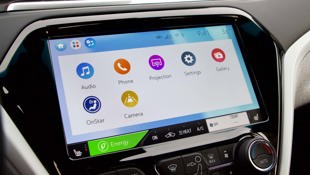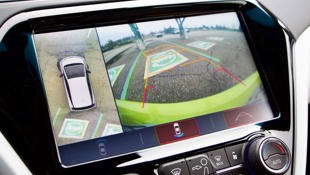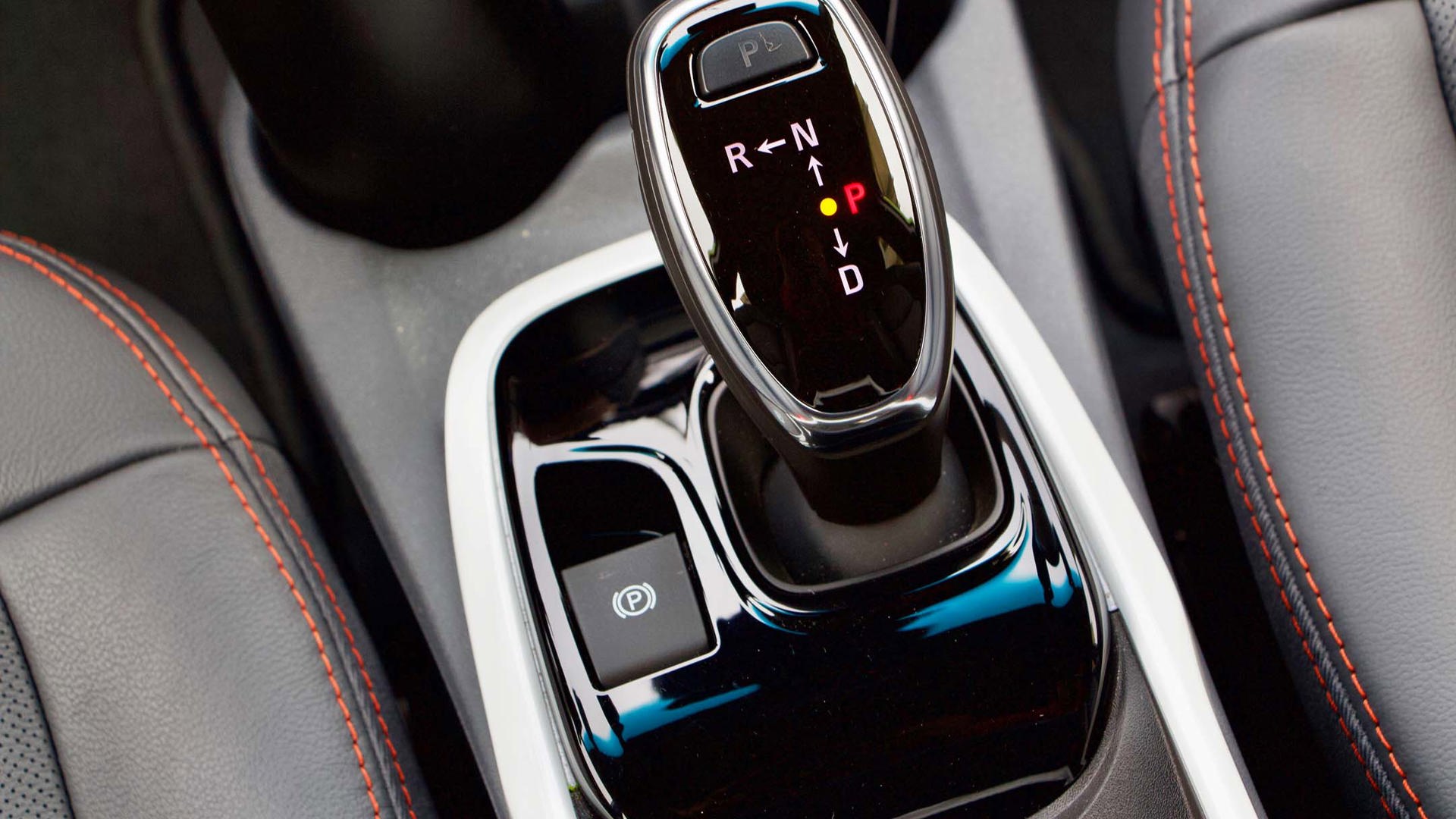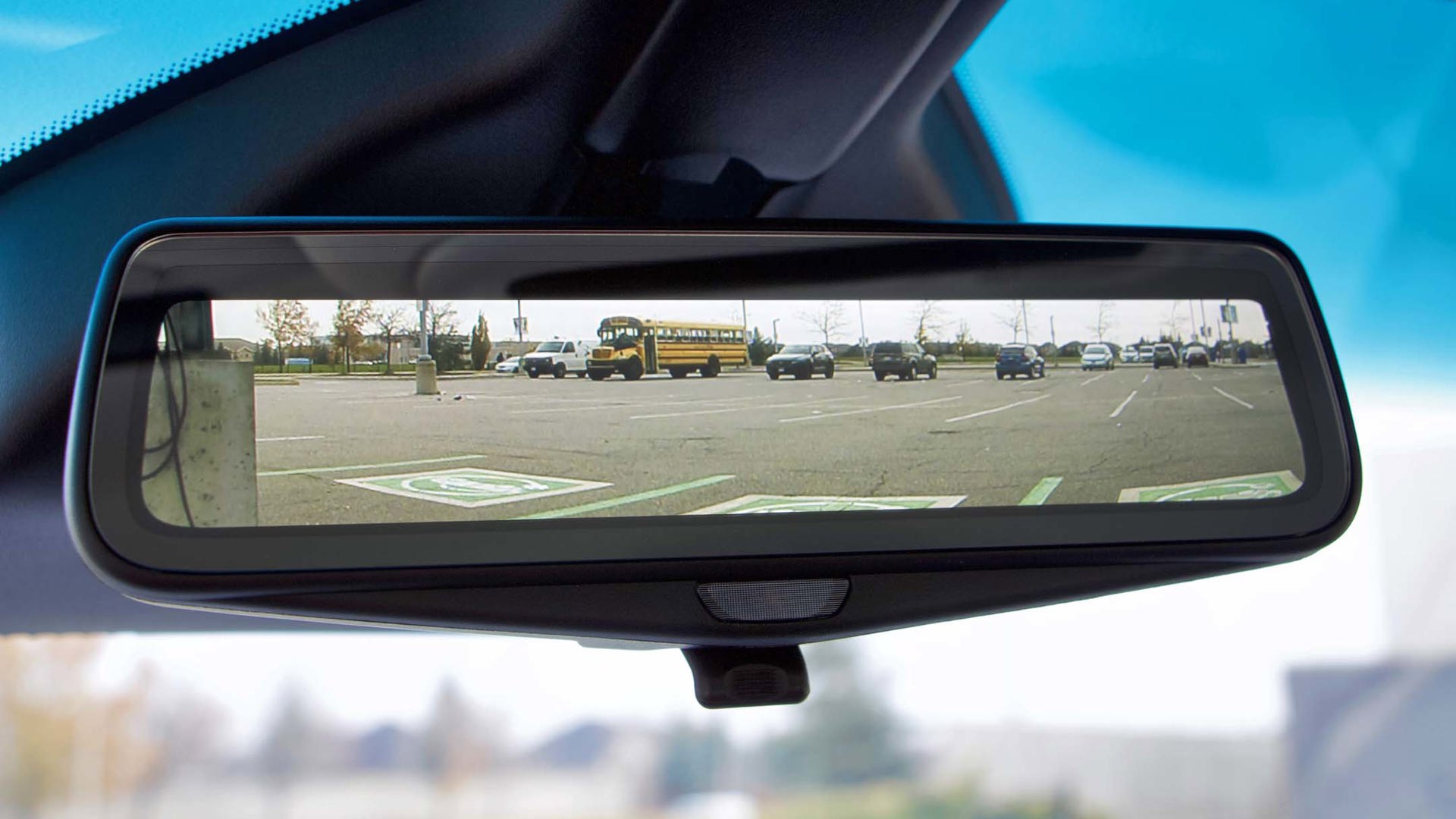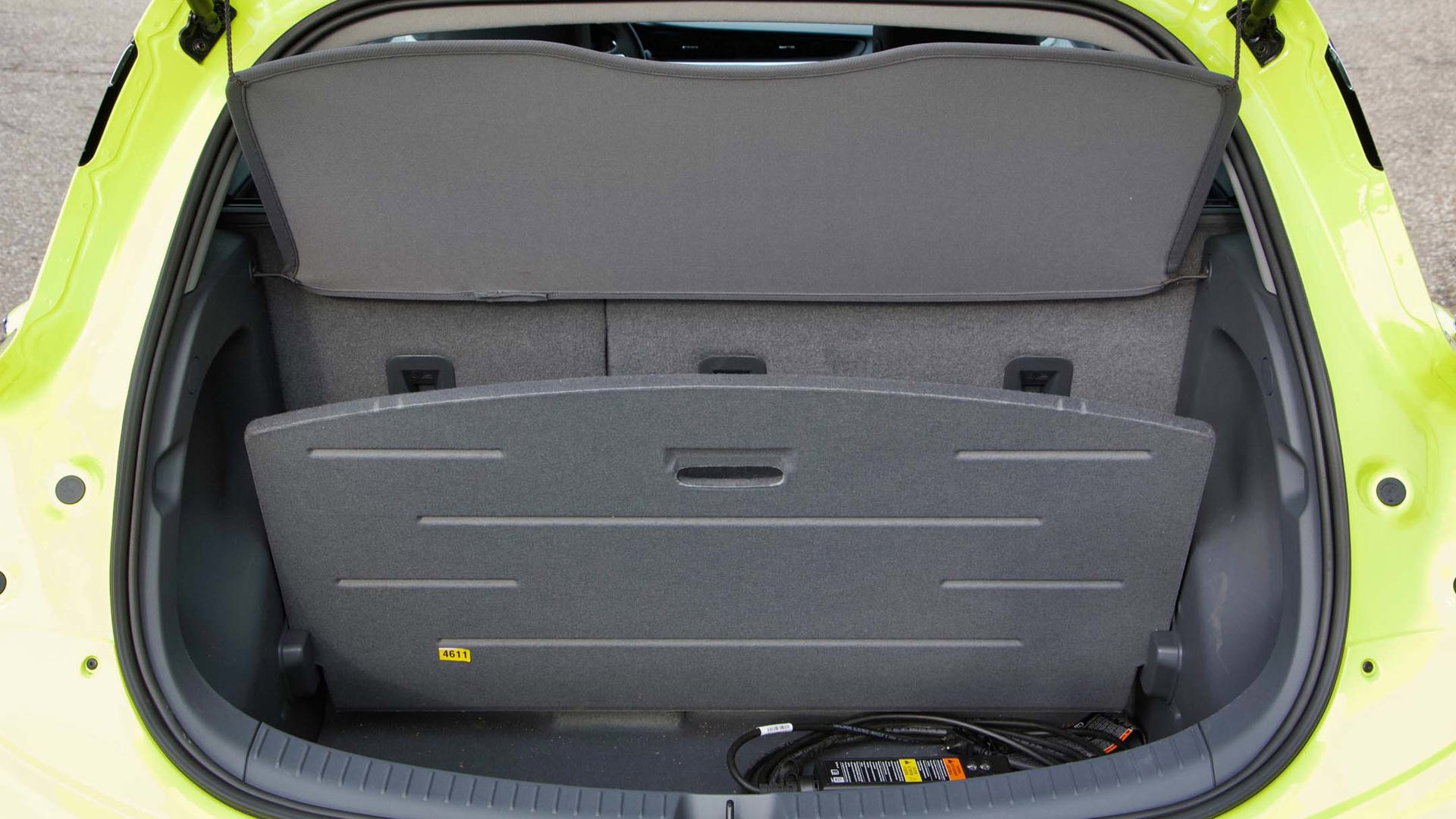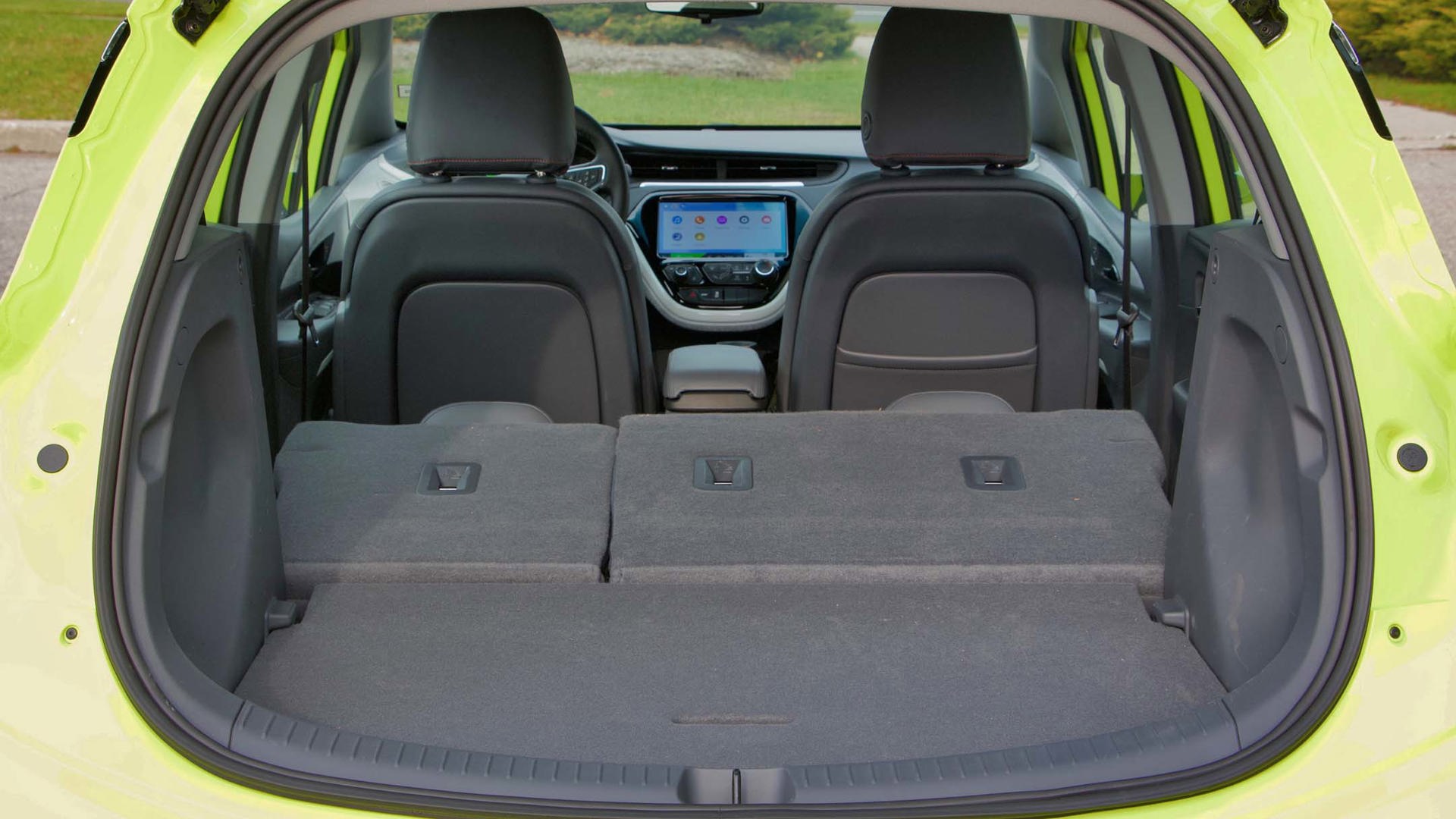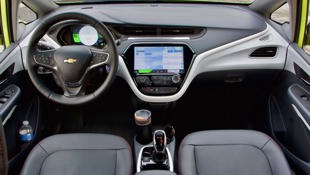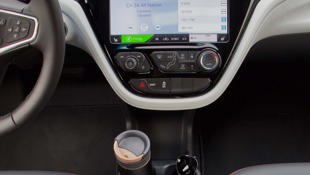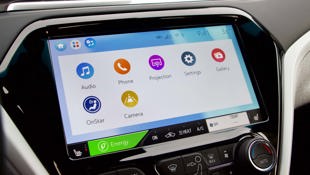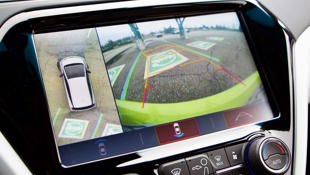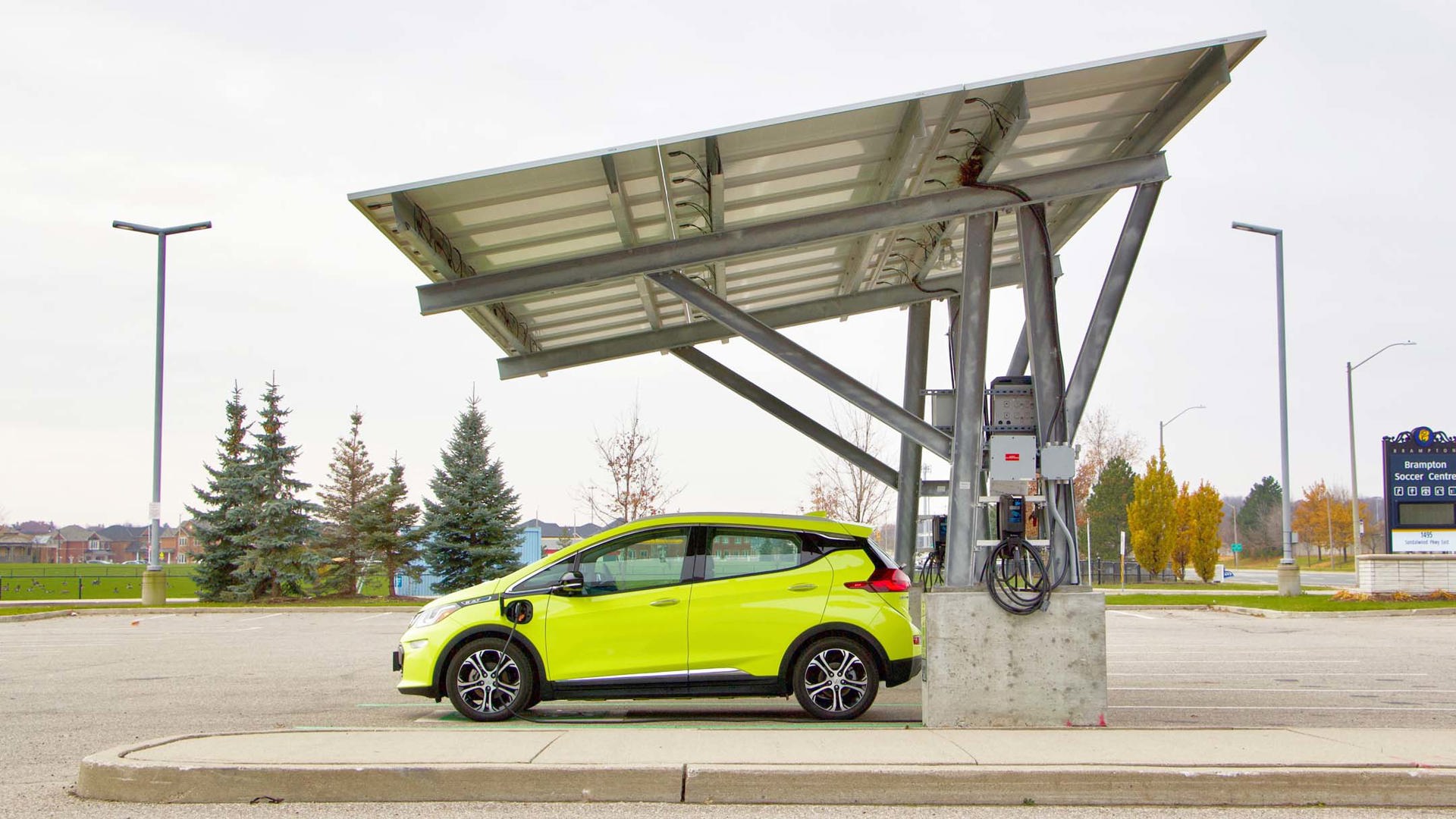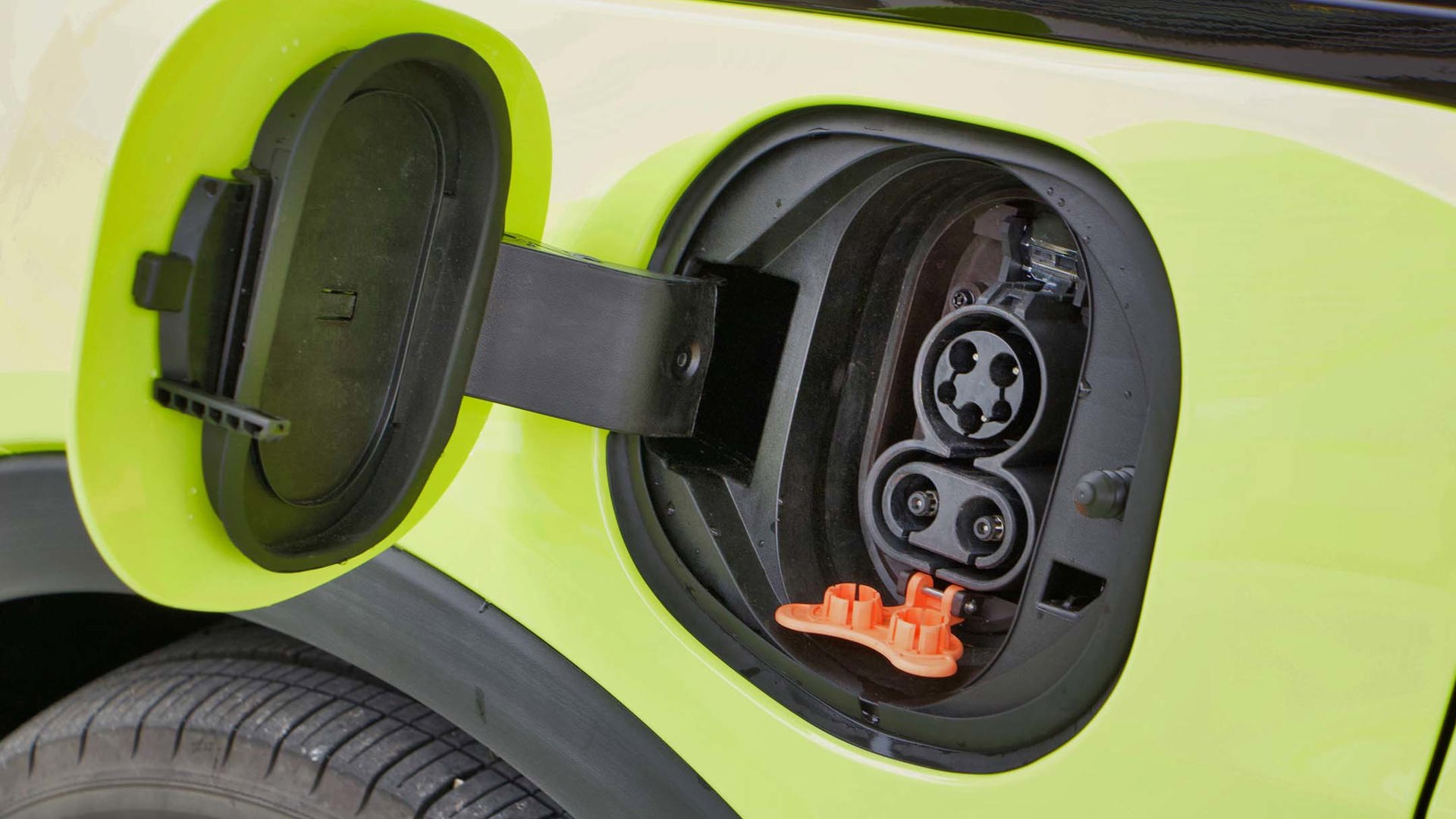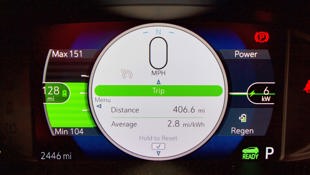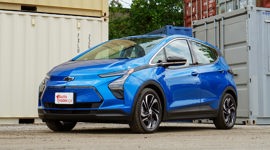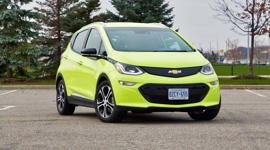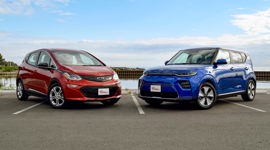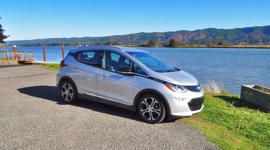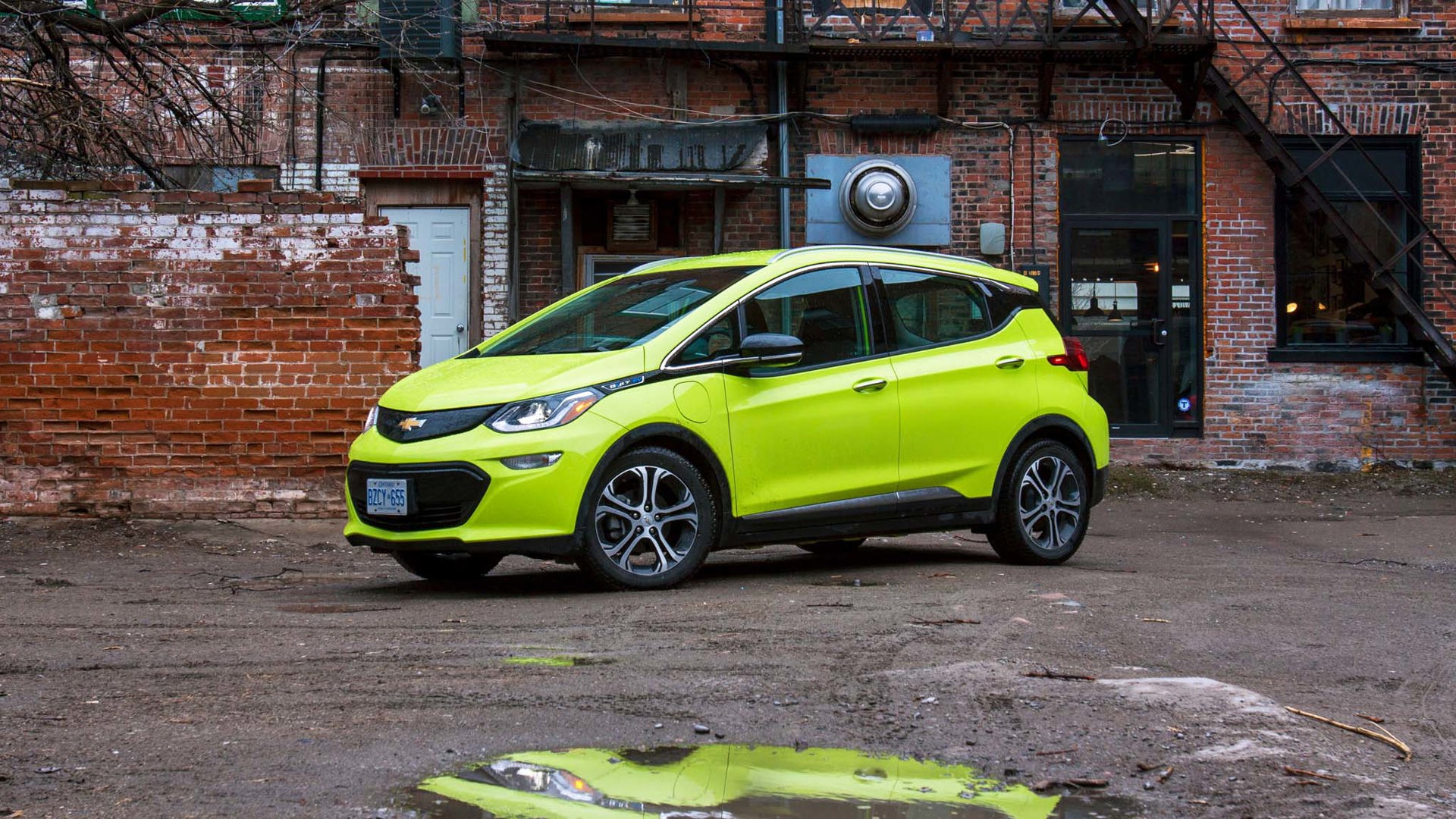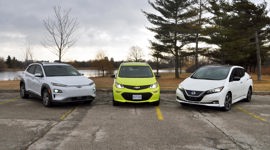 AutoTrader SCORE
AutoTrader SCORE
-
STYLING6/10
-
Safety6/10
-
PRACTICALITY8/10
-
USER-FRIENDLINESS8/10
-
FEATURES7/10
-
POWER9/10
-
COMFORT8/10
-
DRIVING FEEL9/10
-
FUEL ECONOMY10/10
-
VALUE4/10
The Chevrolet Bolt has been on sale for a little over a year now, and as awesome as it is, it can’t quite approach the sales some of the best-selling battery electric vehicles on the market. Okay, GM sold just over 2,100 Bolts last year and is on track for about 2,400 this year. But the Nissan Leaf, which has just two-thirds of the range the Bolt does, is selling like gangbusters, over 5,000 so far this year. And Tesla, which is finally building the Model 3 in sufficient quantities to supply demand, has delivered about 7,000 of them to date in Canada alone.
In addition to being safe and easy to drive, the Bolt is fun.
Despite the promise of the Bolt becoming the first long-range all-electric vehicle at a reasonable price and ready for mass consumption, over $40,000 for a goofy-looking subcompact clearly didn’t get people out of their pickup loyalty and crossover consumption.
Canadians are missing out.
The 2019 Chevrolet Bolt is as good as all the hype that’s been heaped on its awkward little hatchback. Sure, it has a strange, blobby profile and function-over-form proportions, but in this particular shade of Shock Yellow, you’ll likely forget about that as your retinas adjust to the eye-searing brightness. This car got a lot of looks, I’m assuming mostly because of the vivid colour, and I also found it convenient, as it was easy to spot in crowded parking lots from the glow emanating from it.
It wasn’t just the colour that brightened my day, Bolt culture also perked me up. While the Bolt ownership circle is a small club, it’s an enthusiastic one, and as I was loading hockey gear into the trunk, an owner stopped in front of me and yelled “Isn’t this thing GREAT?!?!” I agreed wholeheartedly and we both left with big smiles, although my enthusiasm was slightly curbed as I had to Tetris a few hockey bags into the trunk.
Although the spec sheet lists a respectable 478 litres in the trunk, they must measure the full height, because it’s not very deep with the rear seats getting the lion’s share of interior real estate. It does have a clever removable floor that can serve as a separator or simply dropped down to open up the maximum height with a well that greatly increases cargo volume. That shelf also creates a flat load floor when the rear seats are folded down, and the seats split 60/40 for flexibility in seating/cargo arrangements, offering up to a maximum of 1,603 L, which is better than a lot of subcompact crossovers.
The biggest benefit of the practicality over aesthetics design is rear seat headroom. Here the spec sheet doesn’t do the space justice, listing 927 millimetres of legroom and 962 mm of headroom, but it feels spacious, helped by the completely flat floor. Maybe it’s the 1,056 mm of front legroom, much of which is given back to the rear seat when average or smaller sized drivers are up front. The front seats feel positively cavernous, with more than enough headroom and big huge windows that fill the cabin with light, and make seeing out a breeze. Even if you park nose in, getting out is made easier by rear cross-traffic alert in Premier models like the one I drove.
Although the interior is spacious, its footprint is very small, so along with the great outward visibility, a super smooth throttle and power delivery, and a 360-degree parking camera system, it’s incredibly easy to park and drive in the city and tight parking lots. The downside to its tall cabin and small size and light weight is that crosswinds can really push it around, so it requires a bit more attention on highways to keep it centred. I was also surprised that at this price, and considering the high-tech nature of the car, it was not equipped with adaptive cruise, but it did have blind-spot and lane-departure warnings helping to make driving safer.
In addition to being safe and easy to drive, the Bolt is fun. As mentioned, it’s small but it’s not terribly light, weighing 1,616 kg (to give that some perspective, the comparably sized Honda Fit weighs 1,169 kg and the larger Nissan Leaf EV just 1,580 kg). However, much of that is the lithium-ion battery pack under the floor, keeping the centre of gravity low and the car nimble. It is a lot of battery, with a capacity of 60 kilowatt-hours that yields a range of up to 383 km in ideal conditions.
Ideal conditions being rare, I Iiked the fact that the advanced gauges showed both a max range and a minimum, because I tend to drive at the less-efficient extreme, especially when something has a good punch of torque to walk away from other traffic. It’s silly, and I could drive far more efficiently, I know, but the power surge of an electric motor is quickly becoming one of my favourite driving sensations.
Forget the Tesla P100D’s Ludicrous mode, even the diminutive BMW i3 and pokey Nissan Leaf have it. Officially, the Bolt’s electric motor produces 200 hp and 266 lb-ft of torque, but it feels quicker than that at slow and moderate city speeds, then feels taxed at high speeds.
Driving for fun rather than efficiency uses up more of the battery than crawling along in bumper-to-bumper traffic, and without a Level 2 240V charger installed at our household, the Bolt started every day with a little less range than the day before. Anyone buying a Bolt should definitely plan for the added expense of installing a Level 2 charging station, as a regular 110V household outlet only replenishes range at a rate of 6.4 km for every hour of charging. Meaning if you plug in at 9 pm after getting home from the kids activities and leave at 8 in the morning, that’s just 70 km of range overnight. This would be fine if you have a short 20 km commute, but if you run errands and go out in the evenings, throughout the week your range will be starting a little lower everyday, and might not leave enough for a busy weekend.
A Level 2 charger will top up the Bolt completely in about nine hours, but you can set it to charge during off-peak hours overnight and still get more than enough for most daily routines. There is also a setting for lower amperage charging if you don’t need much and don’t want to charge too heavily during peak demand times. We’ve gathered up more details about home charging stations in our Electric Vehicle Home Charger Buyer’s Guide. I resorted to parking at the local library on a couple of evenings in order to have enough range for weekend activities and the long trip back across town to return the Bolt.
Beyond the demands of keeping such a long-range battery electric vehicle charged, the shifter pattern was the only thing that required an adjustment on my part. Don’t get me wrong, it’s not just EVs that are introducing unusual shift patterns – every company seems to want to go their own way when it comes to selecting Drive and Reverse for some confounding reason. Every week I feel like an old dog needing to learn a new trick.
Anyhow, once you do get it into Drive and start zipping around, there nothing unusual about it, the road and tire noise more pronounced since the electric motor produces little more than a high-pitched hum. Aside from its sensitivity to crosswinds, the Bolt is very well behaved on the road, with impressive comfort levels for such a small car, only very large bumps and potholes rattling the cabin, and the rest of it quietly subdued. As mentioned, despite its weight, the Bolt feels nimble and stable because of its low centre of gravity, and the steering is light but accurate, keeping it fun when you are imagining an autocross cone course in your mind when weaving through traffic.
Okay, maybe not all you potential Bolt owners are going to drive like that, just saying that you can. What you will almost definitely do is appreciate the giant screen for the infotainment system. Its size makes everything easy to read and control, and there is a variety of information to explore about the car and a variety of musical options through Apple CarPlay or Android Auto, or built-in satellite radio. The 10.2-inch screen is bright and clear, with smart layout and shortcuts on the homepage.
The gauge cluster is also a screen and it offers a variety of information and control through steering wheel buttons. Even the rear-view mirror houses a screen – GM’s rear-view monitor, which displays a camera feed or can be flipped back to a regular mirror. I found this especially useful on a rainy night when the video image was hampered by the rain and spray. Even in clear conditions though, the digital image takes some adjusting, but once you get used to it, you realize that it’s giving you a widescreen view from the back, eliminating blind spots from the headrests and rear pillars.
And now we come to the Bolt’s fatal flaw: price. The 2019 Bolt starts at $44,400 plus $1,795 Destination, with only British Columbia and Quebec still providing incentives. In Premier trim, the $49,600 and $1,795 Destination and A/C Tax add up to $51,195, then a charge for that paint, a black bowtie, and the driver aids drove the price to $53,045 in the fully loaded model we tested. The Bolt is good, but $50,000 good? Add in taxes, and that’s just an intimidating price for a little car like the Bolt, unless you care more for the novelty and efficiency of electric driving.
In the United States, the $36,620 starting price is offset by federal tax credits that bring it down to an approachable $29,995 before options and destination fees bring it back up. Chevrolet sold over 23,000 Bolts in the US last year, although the pace has slowed this year to about 12,000 so far.
In Canada, the Leaf offers an alternative that might have less range, but it is just enough for average everyday use, and a more substantial size, with price ranging from $36,798 plus $1,950 Destination to a fully loaded SV at $42,698, beating the Bolt on price, and doubling it for sales with over 4,481 to the Bolt’s 1,944. That said, all year there have been reports of waiting lists ranging from three to 12 months for the Bolt, so there’s certainly demand for it amongst Canadians, more than the sales numbers would suggest.
Yet as much as I loved driving the Bolt and appreciated its utility and efficiency, it’s impossible to overlook that steep price. In BC and Quebec it might be an interesting alternative to gasoline cars or hybrids with significant rebates, but even then the Leaf still outshines it with the same discount, though notably less range. What promised to be a mainstream option doesn’t have the cachet or popularity of the Tesla or the value of the Leaf to make people ignore that price, so it is falling behind in the sales race despite being an excellent little vehicle.
| Engine Displacement | 150 kW electric motor |
|---|---|
| Engine Cylinders | N/A |
| Peak Horsepower | 200 hp |
| Peak Torque | 266 lb-ft |
| Fuel Economy | 1.8 / 2.1 / 2.0 Le/100 km 100 km cty/hwy/cmb; 16.4 / 19.0 / 17.6 kWh/100 km cty/hwy/cmb |
| Cargo Space | 478 / 1,603 L seats down |
| Model Tested | 2019 Chevrolet Bolt |
| Base Price | $49,600 |
| A/C Tax | $100 |
| Destination Fee | $1,795 |
| Price as Tested | $53,045 |
|
Optional Equipment
$1,550 – Driver Confidence II Package (Forward collision alert and emergency braking, lane departure warning and lane keep assist) $795; Shock Yellow Paint $495; Black Bowtie Badges $260
|
|
